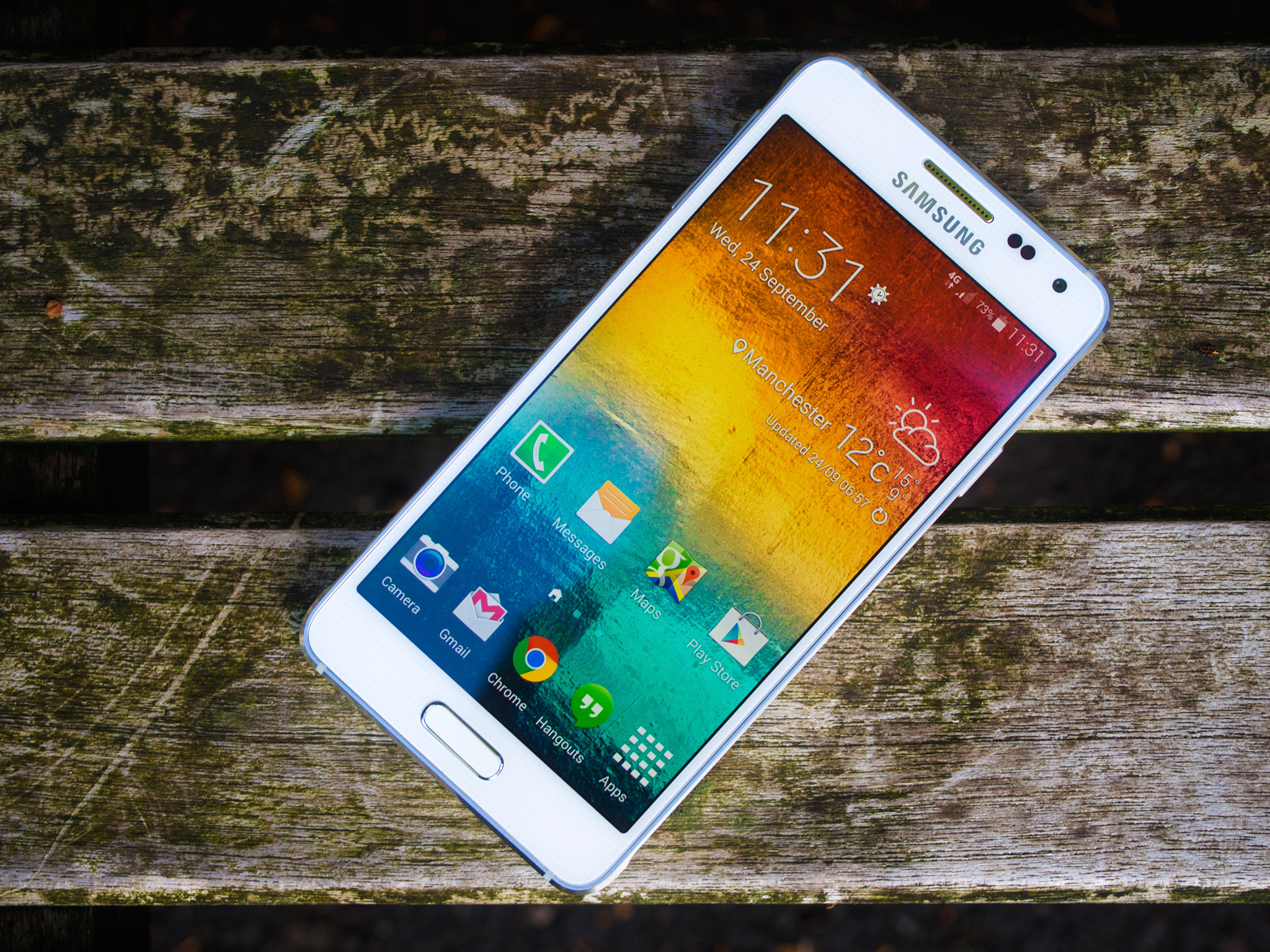In years gone by, Samsung phones have been synonymous with unspectacular plastic construction. At one time it was shiny, slimy plastic that the No. 1 Android phone maker utilized. More recently Samsung has veered towards faux leather and dimpled soft-touch plastic. In any case, the company seemed content leaving more exotic materials to the likes of Apple and HTC.
No more.
The Samsung Galaxy Alpha sees the Korean electronics giant finally taking premium materials seriously as a point of differentiation, while offering high-end specs in a device smaller than the typical 5-inch Android slab. It's available now in Europe; on Sept. 26 it launches on AT&T in the U.S.
Samsung calls it the future of its smartphone design language. We say it's a great phone with just a couple of tragic flaws. Read on to learn why.
About this review
We're publishing this review after five days of using a white European unlocked Galaxy Alpha (SM-G850F) on the Vodafone LTE network in the UK. Our review unit was a powered by an octa-core Exynos 5430 processor; in other territories including the U.S., a quad-core Qualcomm Snapdragon 801-based Galaxy Alpha will be sold. Our review unit was running software version G850FXXU1ANI2, based on Android 4.4.4 KitKat.
Thanks to Unlocked Mobiles for providing the Samsung Galaxy Alpha for review. Unlocked Mobiles is currently selling the European Galaxy Alpha SIM-free for £499.87.
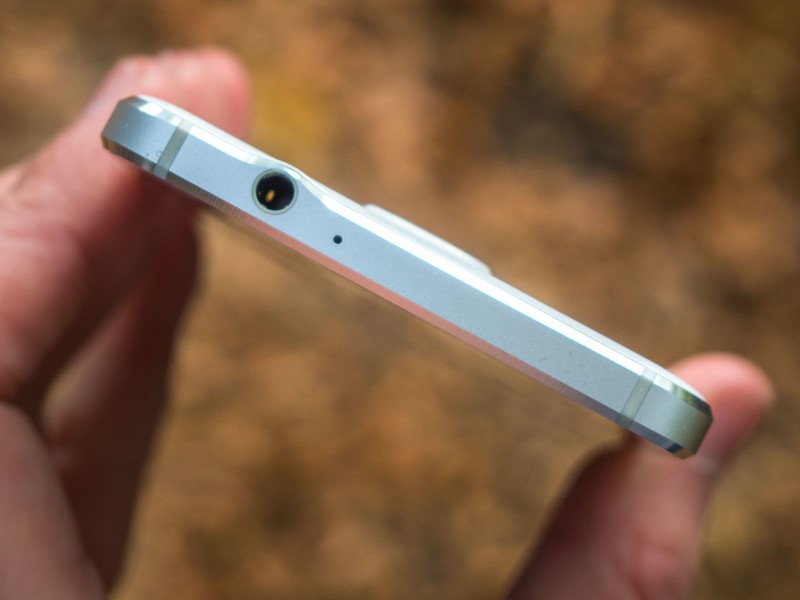
Hardware and build quality
Mighty metal miniature
The Galaxy Alpha represents a couple of important firsts for Samsung. It's the company's first significant metal-bodied smartphone, spearheading the new design language that we now see in the Galaxy Note 4. It's also the first time in recent memory that the Android giant has put top-level internals in a smaller form factor device. In stark contrast to the Galaxy S5 Mini and earlier minis, this is no watered-down mid-ranger — the Alpha packs the same hardware muscle as many full-sized Android flagships.
This is no watered-down mid-ranger.
It's also Samsung's best-looking handset to date, augmenting its established Galaxy S aesthetic with premium materials. The Alpha swaps the faux chrome trim of old with a sharper aluminum band — it looks better, feels better, and makes us wonder why it took Samsung so long to see the light. When holding the Galaxy Alpha normally, most of the contact points between phone and hand are on the metal band, making the in-hand feel drastically different from most other Samsung phones. That's a good thing — it's a colder, sturdier, more elegant handset, while the raised edges towards the top and bottom give it a slightly industrial twang.
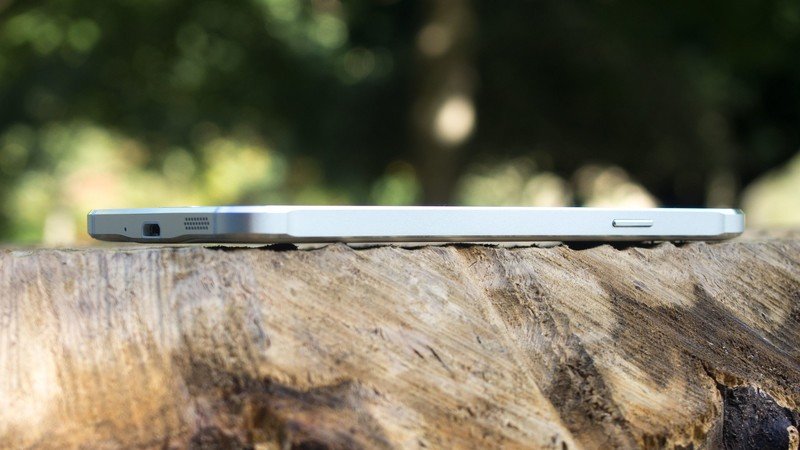
The chamfered band holds most of the phone's ports and connectors — metal power and volume buttons on the right and left respectively, both within relatively easy reach. MicroUSB and single speaker down below, headphone jack up top. And beneath the screen Samsung's sticking with its trademark clicky home button, flanked by capacitive back and app-switching keys.
Along the top and bottom edges you'll find plastic notches to assist with antenna reception, same as many other metal phones. They aren't especially noticeable, but on our white model we've found that they discolor pretty easily just from being taken in and out of a jeans pocket over a couple of days. The marks are easy to remove with a cloth, however it's possible staining may accumulate over time.
We noticed no such issues with the Alpha's plastic battery door, though. The back panel of our white review unit has a subtle dotted pattern with a slightly reflective finish, while being soft to the touch. (Choose the black model and you'll get a more traditional rubbery soft-touch plastic finish.) So like most other Samsung devices the back of the Galaxy Alpha is plastic — and relatively thin, flexible plastic at that. Yet it doesn't feel as flimsy or creaky as its predecessors, perhaps due to the closeness of the fit between phone and battery door. The illusion may be broken when you peel the back off, but while it's fitted the Alpha feels like a sturdy, well-built phone.
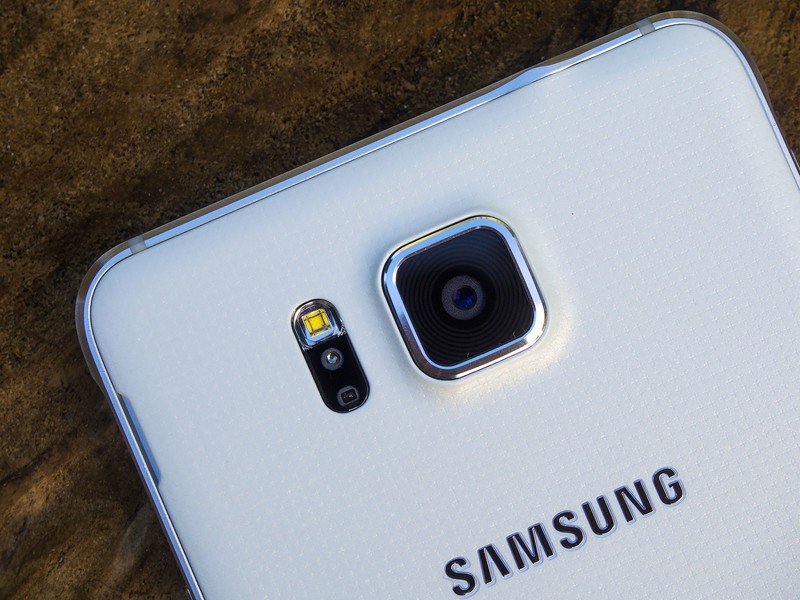
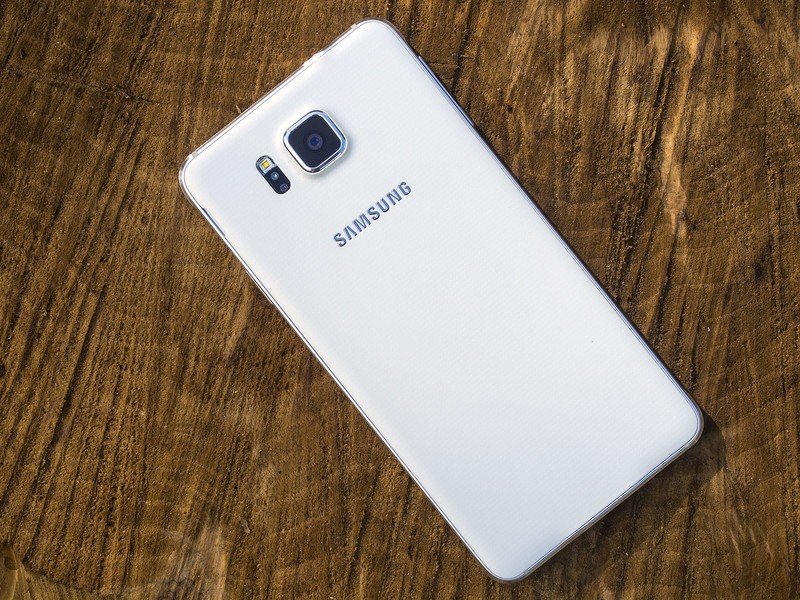
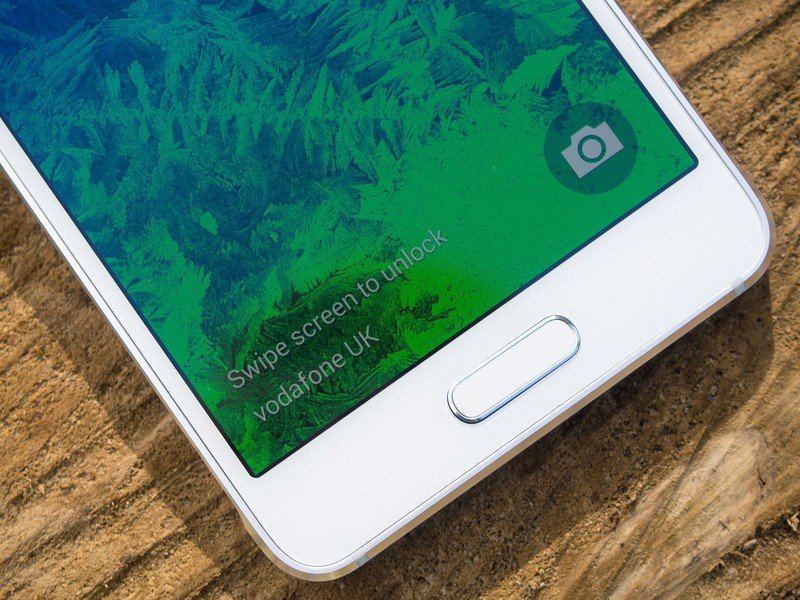
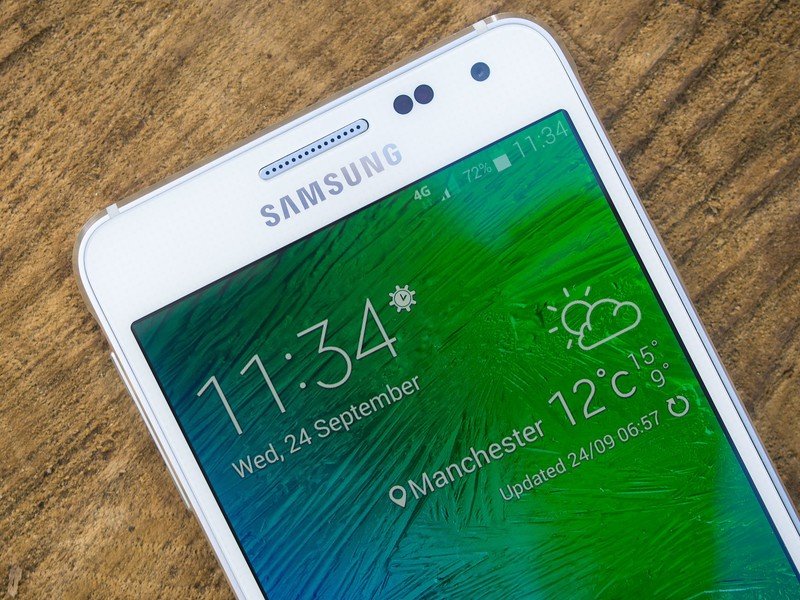
Peeking through that battery door is the Galaxy Alpha's 12-megapixel rear camera, which is paired with a single LED flash and a rear-mounted heart rate sensor. Behind it is the nanoSIM slot and removable 1,860mAh battery. Sorry, microSD fans — no removable storage here, but the Alpha does boast an ample 32GB of built-in flash, of which 26GB is available to use.
The plastic body of the Galaxy Alpha no doubt contributes to its relative lightness. The phone weighs in at just 115 grams; by contrast the all-plastic 2013 Moto X, also a 4.7-incher, weighs 130 grams. It's colder and sharper than most plastic smartphones, but it's not uncomfortable to hold, in part due to its size. In a world where 5-plus-inch handsets are increasingly the norm, there's something about going back to a 4.7-inch display that feels just right.
In a world of monstrously huge Android phones, there's something about going back to a 4.7-inch display that feels just right.
Big-screen phones have their advantages, as I've found using the enormous LG G3 as my daily driver in recent months. I'm not sure whether I'm ready to swear off larger phones altogether, but since getting my hands the Galaxy Alpha I'm beginning to agree with those who say this is the "goldilocks" size for smartphones.
And not only is the Alpha is easier to one-hand than most gigantic Android phones, it's also more pocketable due to its slim profile — 6.7mm, not counting the camera bump.
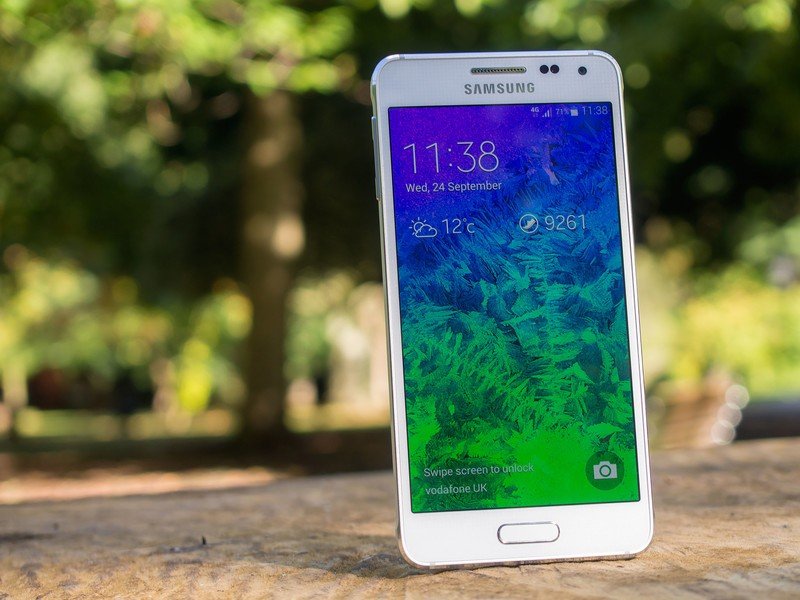
The trade-off for a more manageable device, however, is reduced screen real estate and resolution. The Alpha packs a 4.7-inch 1280x720 Super AMOLED panel, so it's no match for the astronomical pixel density of many high-end rivals. Overall it's a pretty good-looking screen, though, with the bright, vivid colors we've come to expect from modern Super AMOLEDs. Colors pop in the UI, but photos don't look weirdly oversaturated like on some older AMOLED displays; color charts reveal a relatively uniform pattern of contrast enhancement.
Daylight visibility is also pretty good — comparable to that of the Galaxy S5. And like the GS5 there's a special super-high brightness mode that kicks in when the phone is exposed to very bright sunlight, increasing visibility at the cost of contrast. A word of warning for anyone considering the white version, though — the highly reflective white bezel around the display can make it more difficult to focus on the display in brighter conditions.

The PenTile matrix pattern rears its ugly head again, but overall the Alpha has a pretty good-looking 720p screen.
Our only real display gripe has to do with the PenTile matrix pattern — the jagged edges visible in certain fonts and UI elements due to the irregular subpixel pattern being used. (Basically, fewer tiny colored dots are used to represent each on-screen pixel than a typical LCD panel.) For me, at a normal viewing distance, it isn't especially noticeable, but it is one of those things you can never unsee.
So it's still got a plastic back and a PenTile display, and a big Samsung logo plastered above the screen. Yet everything about the Galaxy Alpha is improved immeasurably by that metal frame. It's sturdier, yet somehow lighter than many competitors. And it feels like a premium handset, even if the plastic hasn't been entirely eliminated.
Overall it's a big, important design improvement for the biggest Android phone maker.
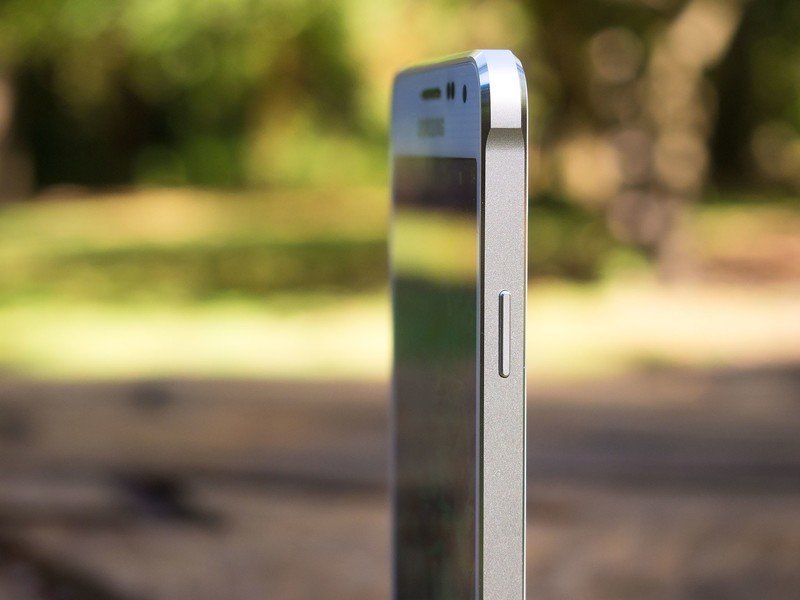
Performance and specs
Firing on all eight cores
Here's where things get interesting for the tech nerds. The Galaxy Alpha, like many Samsung phones, comes in two flavors. In some territories it uses Samsung's homegrown Exynos 5430 octa-core chip. In others, including the U.S., it uses an off-the-shelf Qualcomm Snapdragon 801 chip — a quad-core part at 2.5GHz which is also used in the Galaxy S5.
Our review unit is the Exynos octa version, running four Cortex A15 cores at 1.8GHz and four Cortex A7 cores at 1.3GHz in a "big.LITTLE" setup with heterogeneous multiprocessing (HMP). That's a fancy way of saying that all eight cores can work at once, even though they're not exactly the same type of core. And unlike earlier 4-plus-4 octa-core chips which could only use either their A15s or A7s at any one time, HMP lets you use all eight at concurrently.
The idea is you get the best of both worlds — the speedy A15s are favored for high-powered tasks like gaming and heavy app usage, the A7s are low-power, energy-efficient cores ideal for handling light background tasks.
That's all backed up by an ARM Mali T628 GPU and 2GB of RAM. (And, as we've mentioned, 32GB of storage and an 1,860mAh battery.)
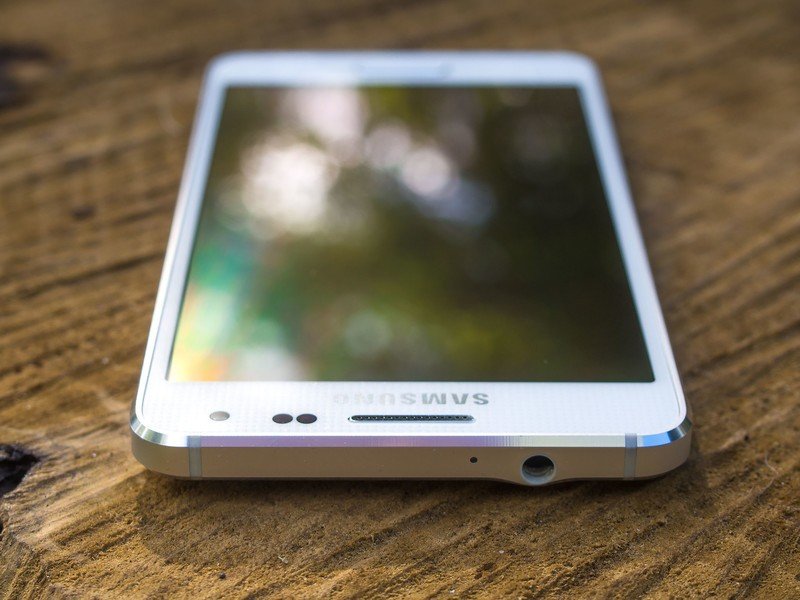
The Galaxy Alpha performs like a flagship should.
The Galaxy Alpha is a speedy performer across the board, matching or exceeding the Snapdragon-powered Galaxy S5 in most tasks. There's no animation lag in the traditional sense, and most apps load quickly with only a couple of exceptions. Samsung's monstrous Settings app can take a while to get going, and there's a fraction of a second delay in loading the app-switcher. Regardless, we're pleased to report that none of the weird performance issues affecting the Galaxy S5 at launch affect the Alpha. And like the GS5 with the latest firmware updates, it's a speedy, enjoyable device to use.
It's also a pretty good gaming performer, perhaps due to its beefy GPU and relatively low resolution. Even graphically intensive titles like Epic Citadel were handled with ease, though we noticed a heavy drop-off in performance with successive benchmark runs, as thermal throttling kicked in
Samsung Galaxy Alpha specs{.cta}
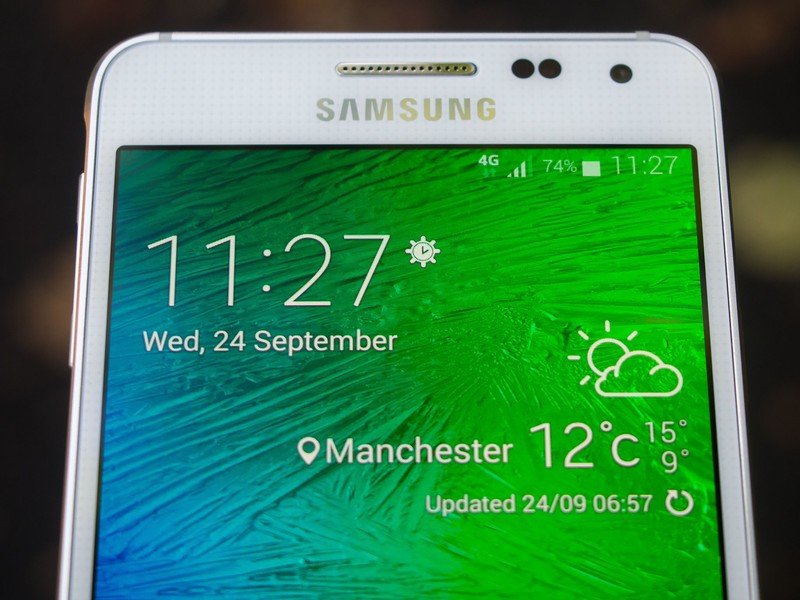
Software and features
TouchWiz, with minor tweaks
Despite the new approach taken with the Galaxy Alpha's hardware, the phone's software follows a well-worn path: Samsung's TouchWiz UI atop the latest Android 4.4.4 KitKat. And for the most part, it's identical to the software you'll find on the Galaxy S5.
For the most part, the software experience is a repeat performance of the Galaxy S5.
So what's different? Well, the weather widget has been tweaked to remove the background graphics present in earlier versions. (Though you can re-enable this in the settings.) There's a new screen unlock effect. There are eight new stock wallpaper backgrounds, as explosively colorful as we've come to expect from Samsung. And that's really about it.
It feels a little like TouchWiz is between versions here. You don't get the fancy new multitasking features of the Galaxy Note 4, though Multiwindow itself is intact, letting you run two apps on-screen at once. Subtle visual tweaks have made TouchWiz more modern-looking and generally less objectionable than in years past — nevertheless, Samsung's UI is still something that's just kinda there. The overall experience isn't quite as coherent as stock Android or HTC Sense.
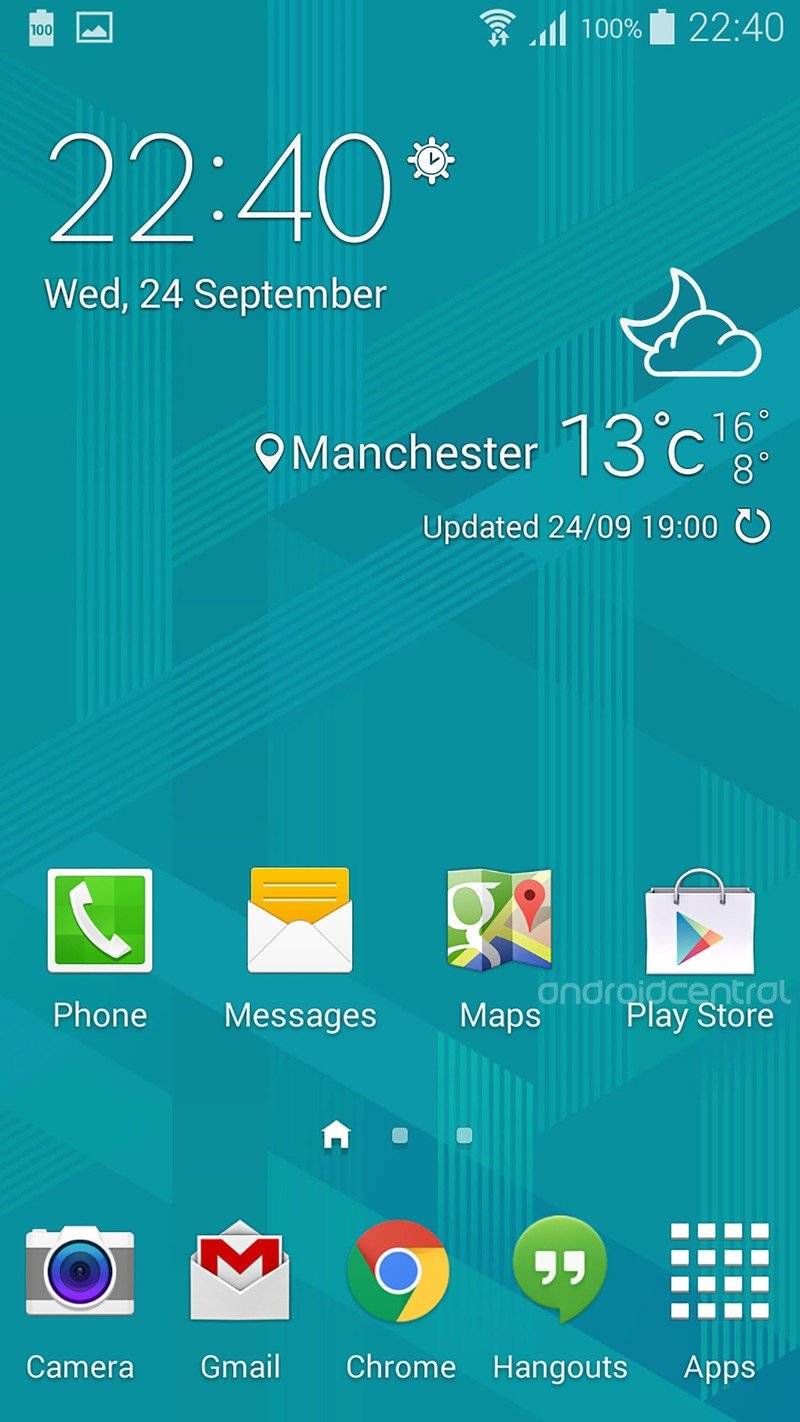
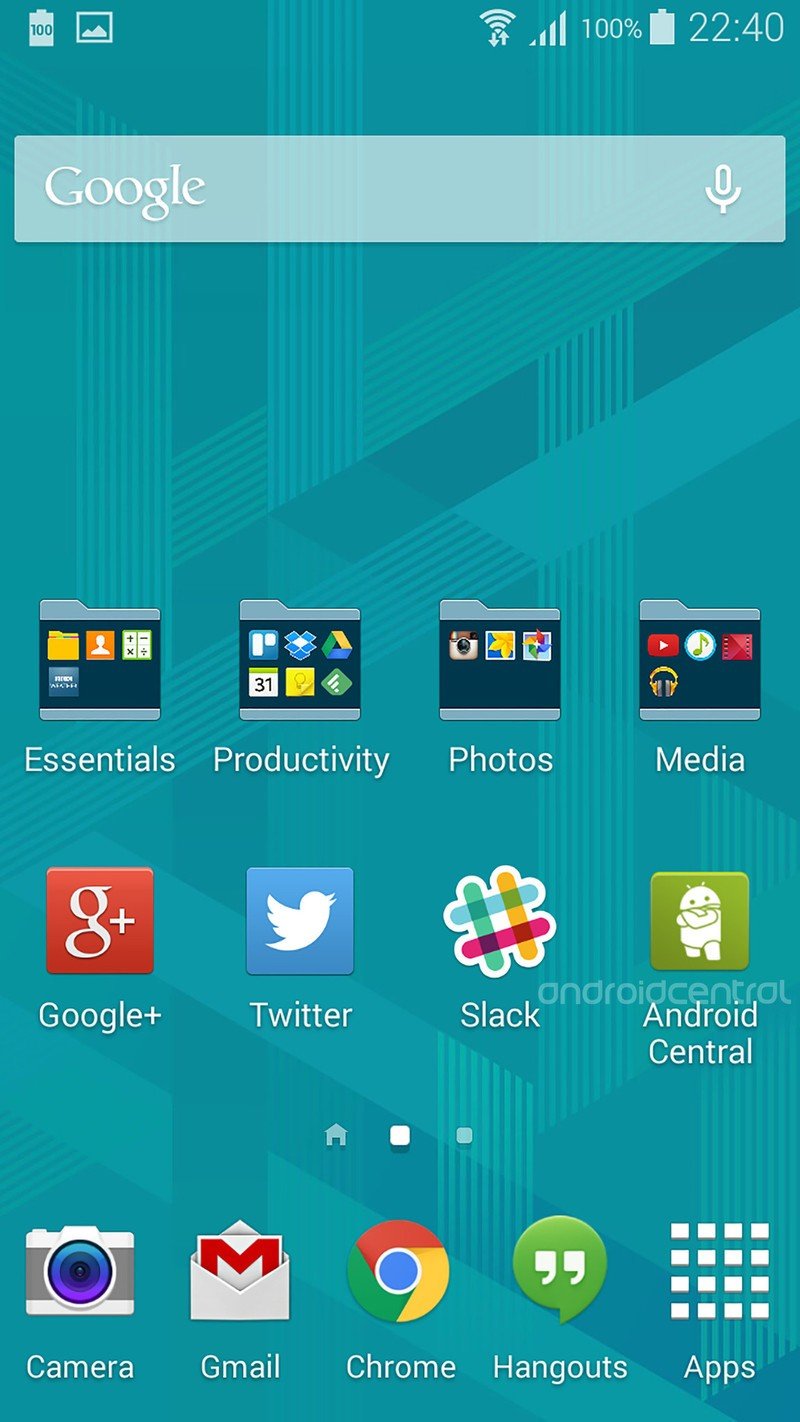
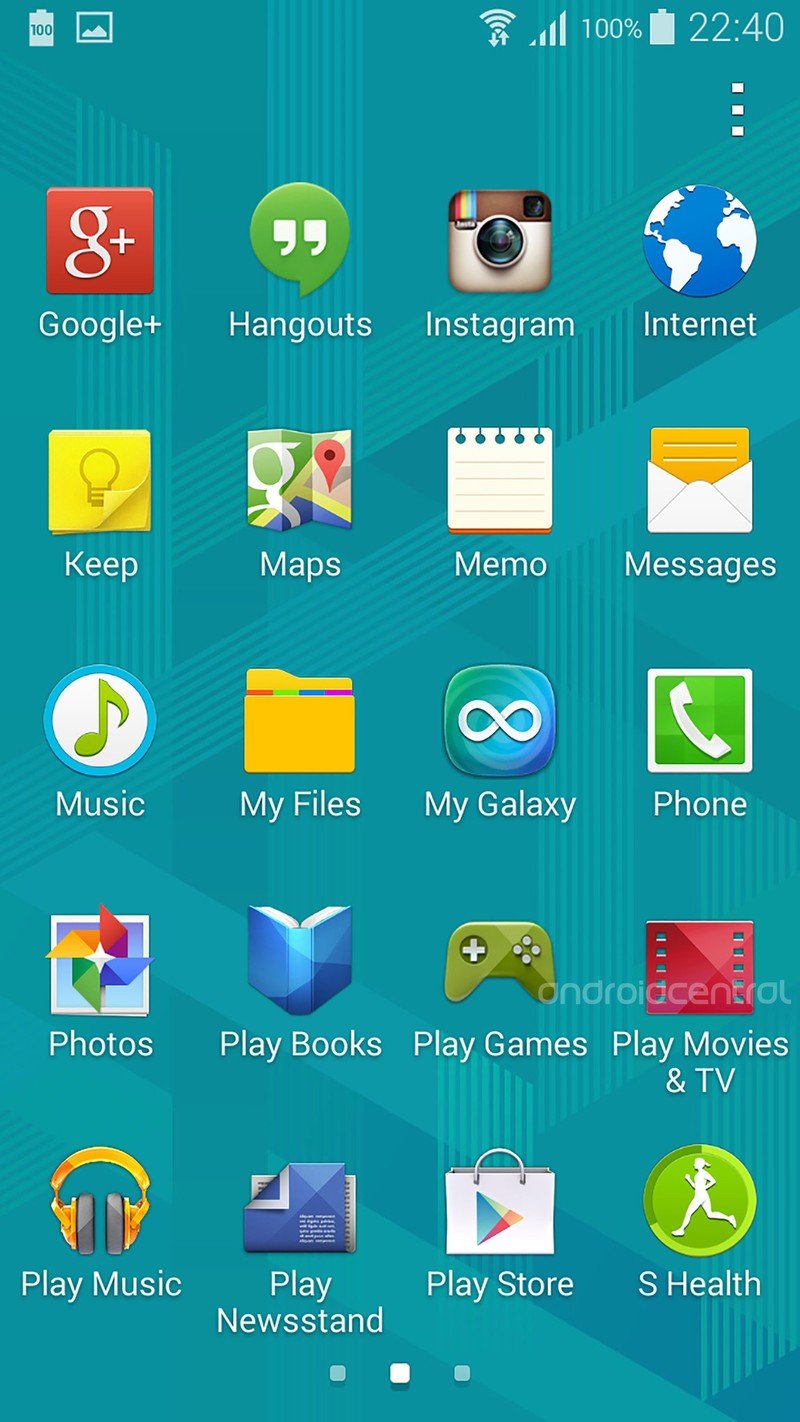
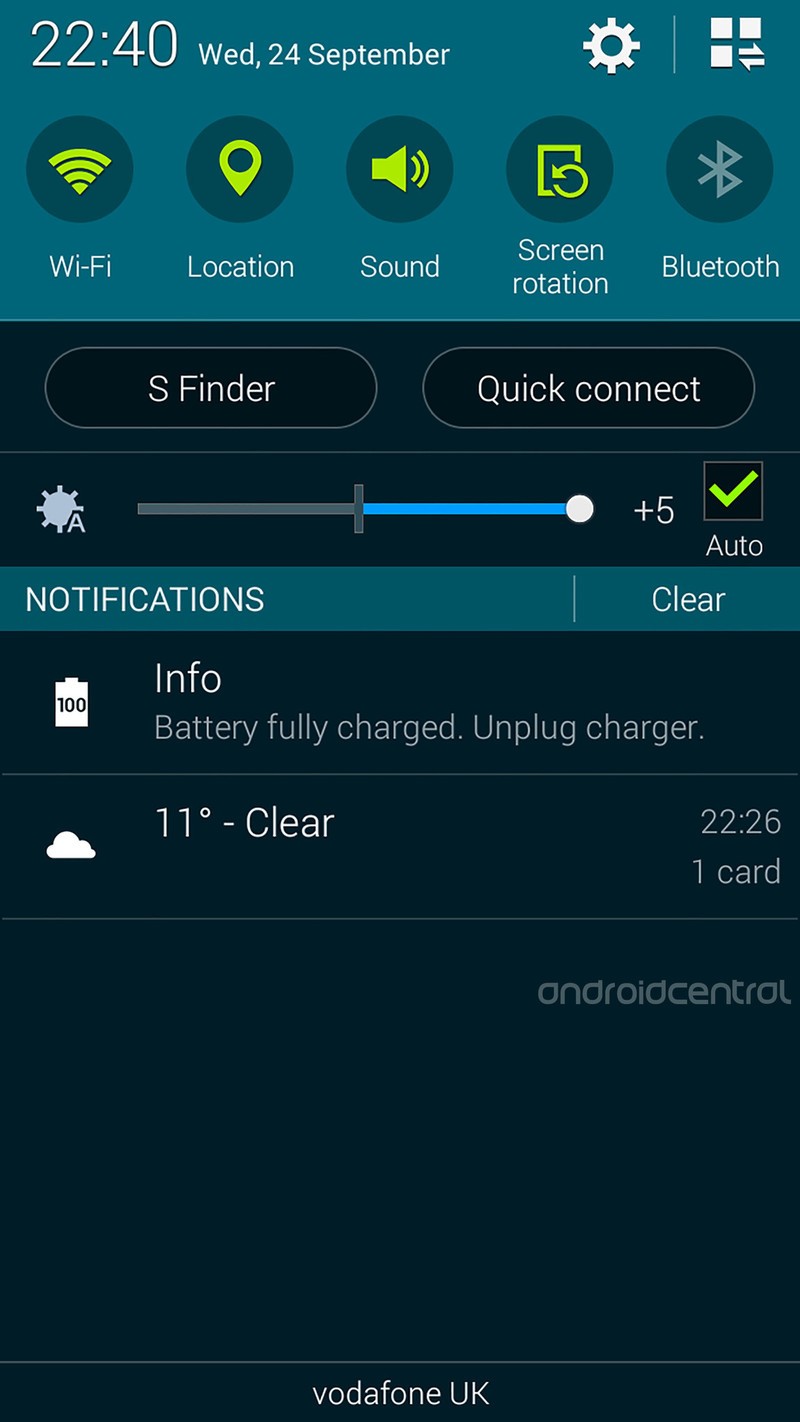
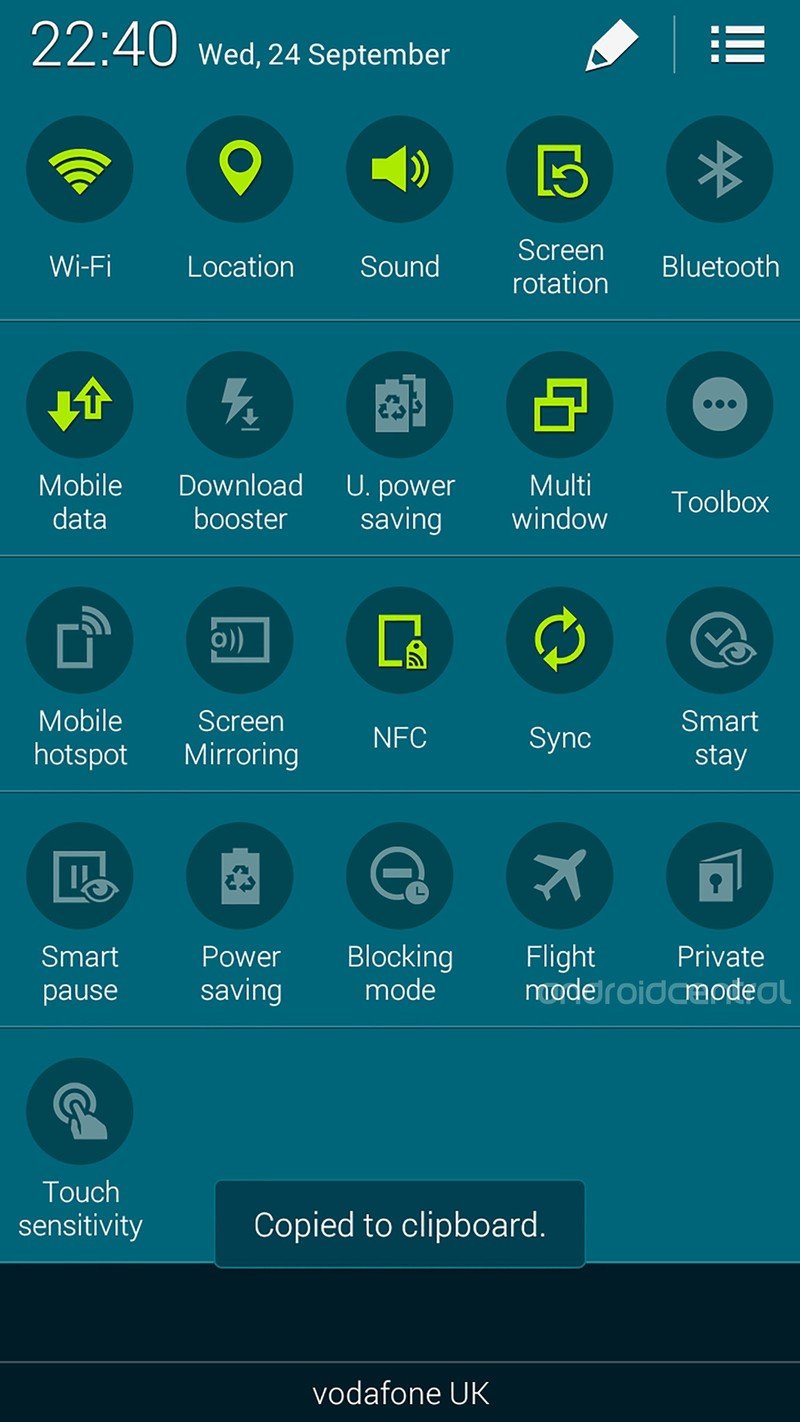
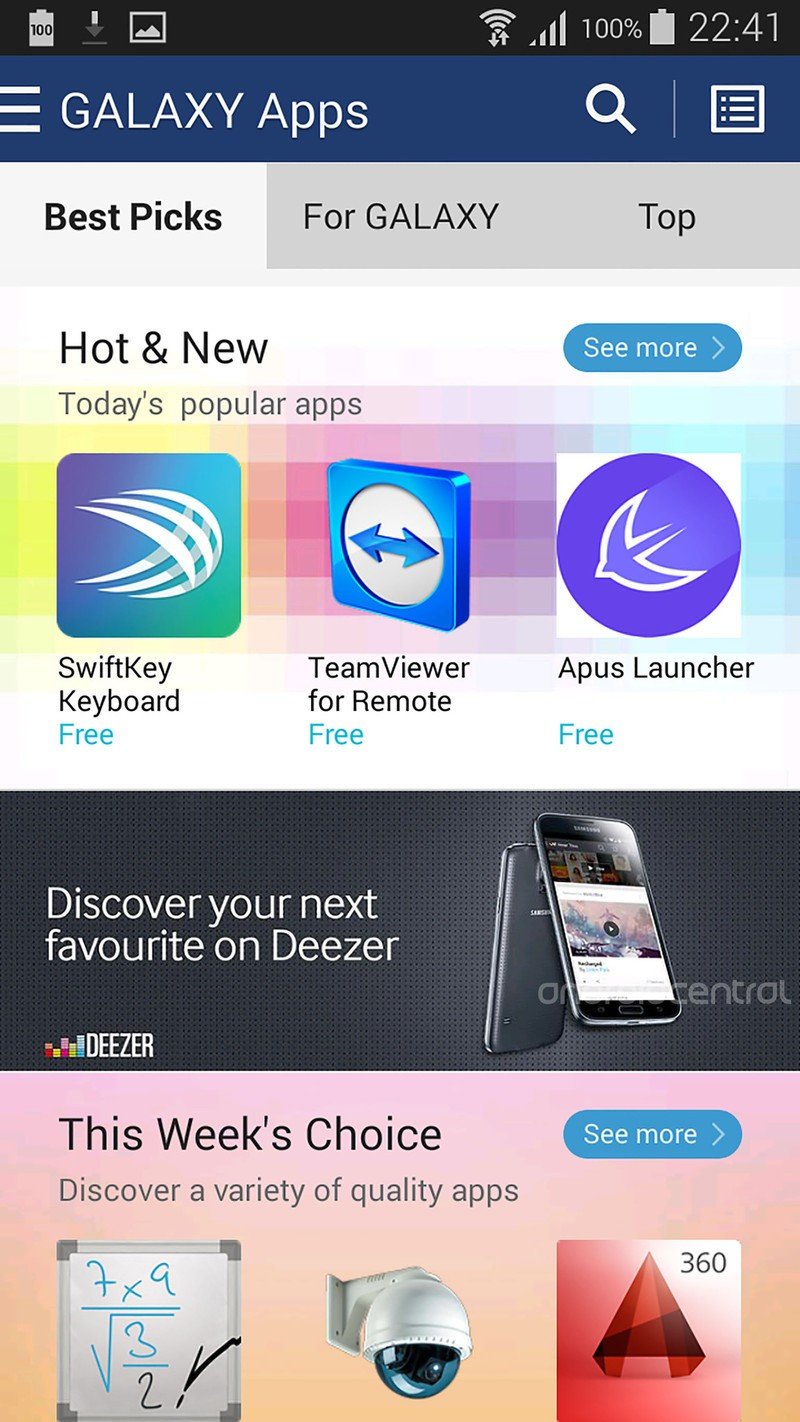
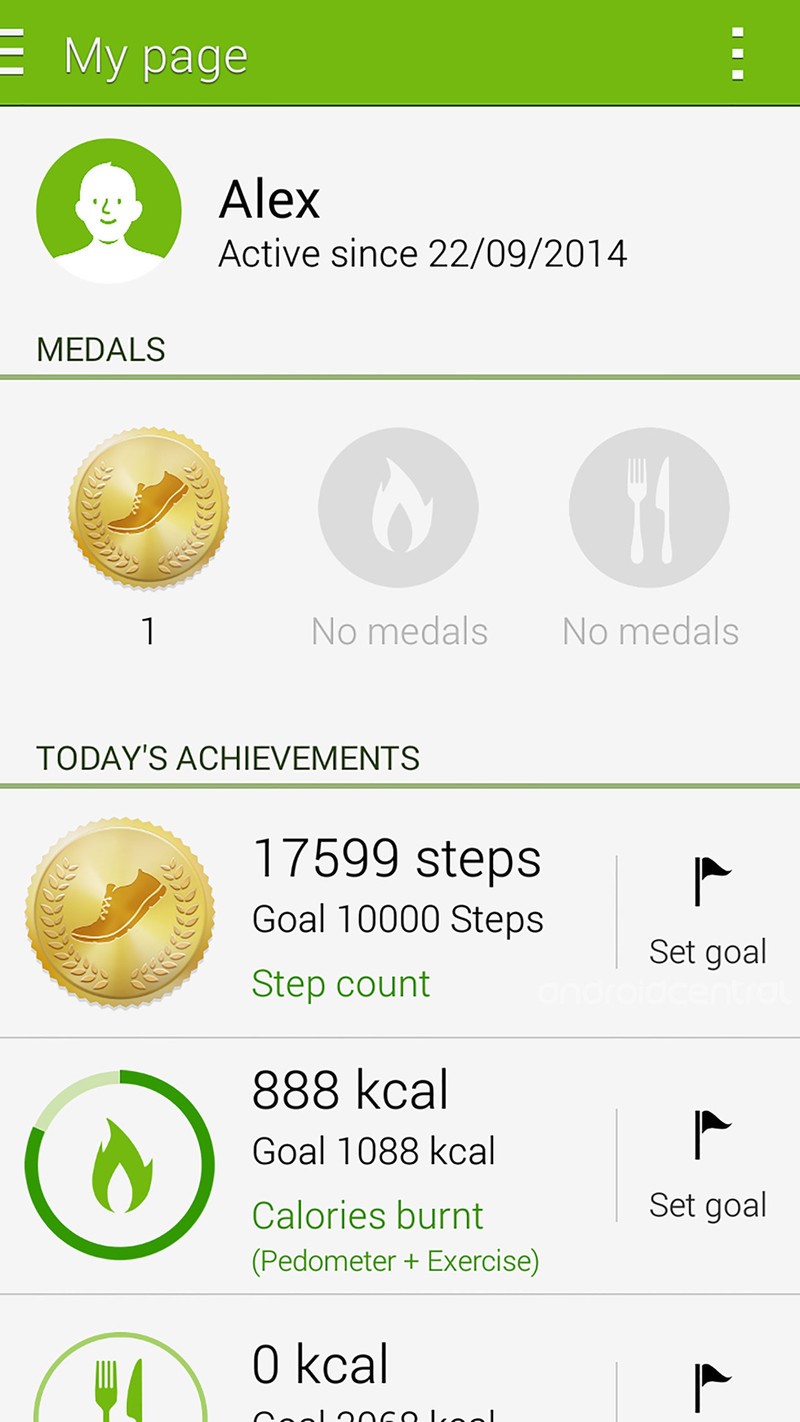
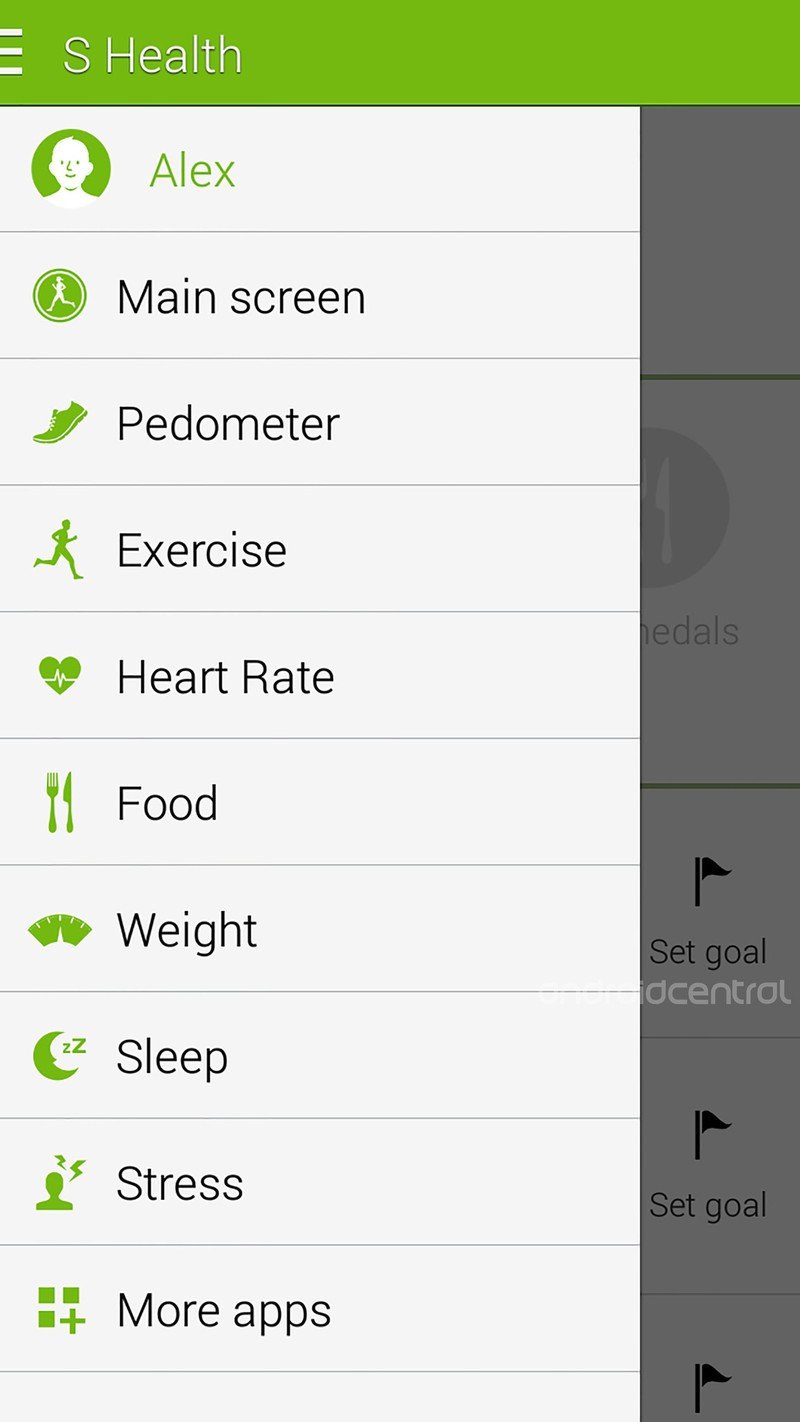
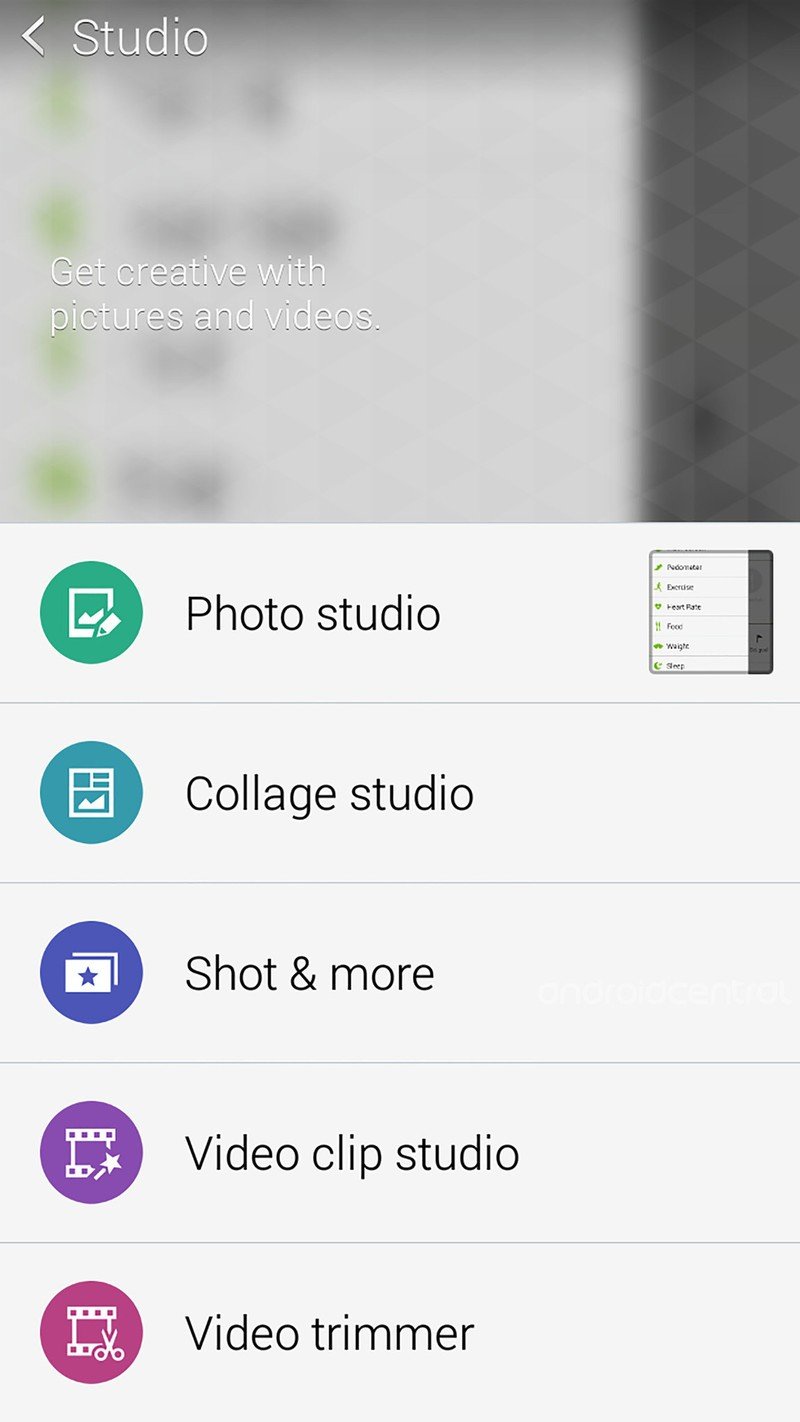
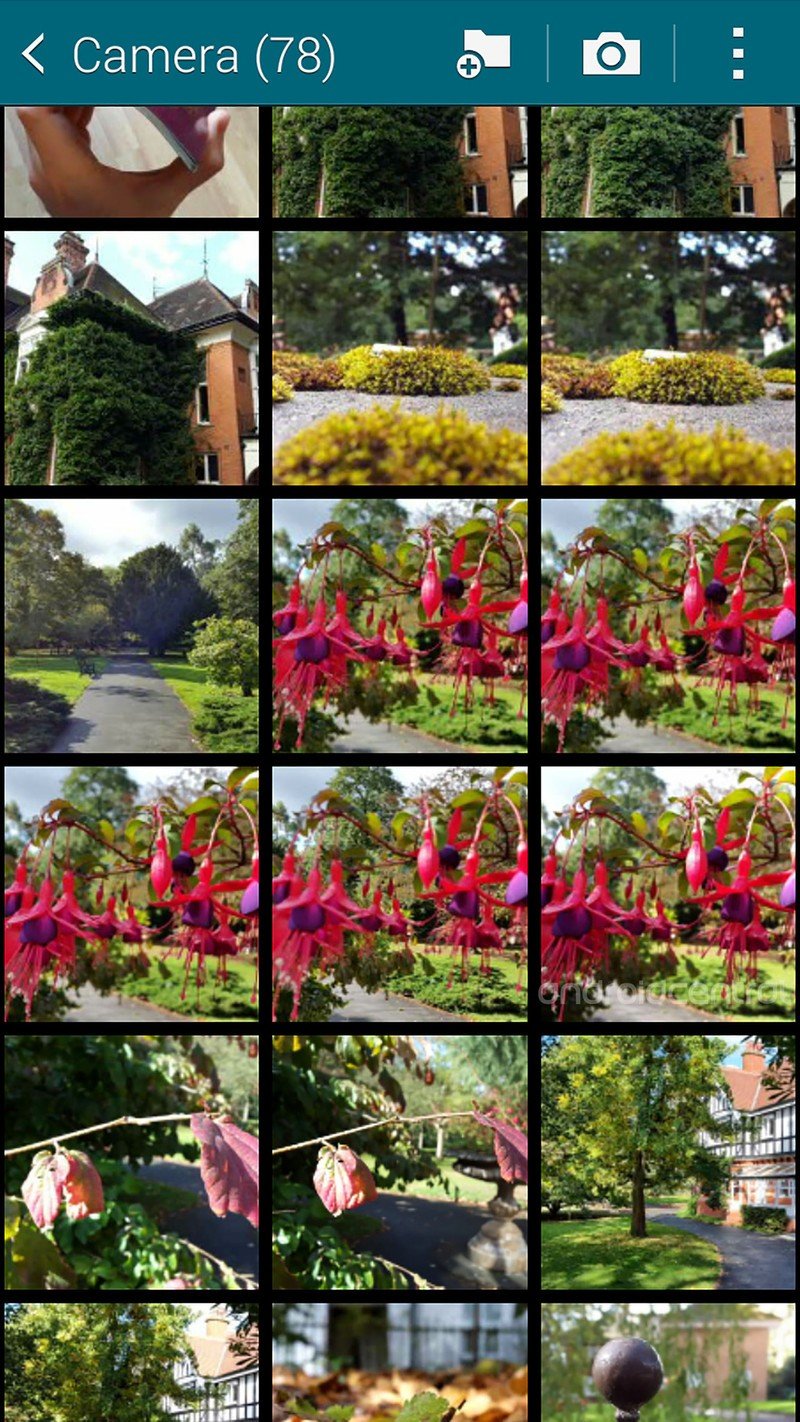
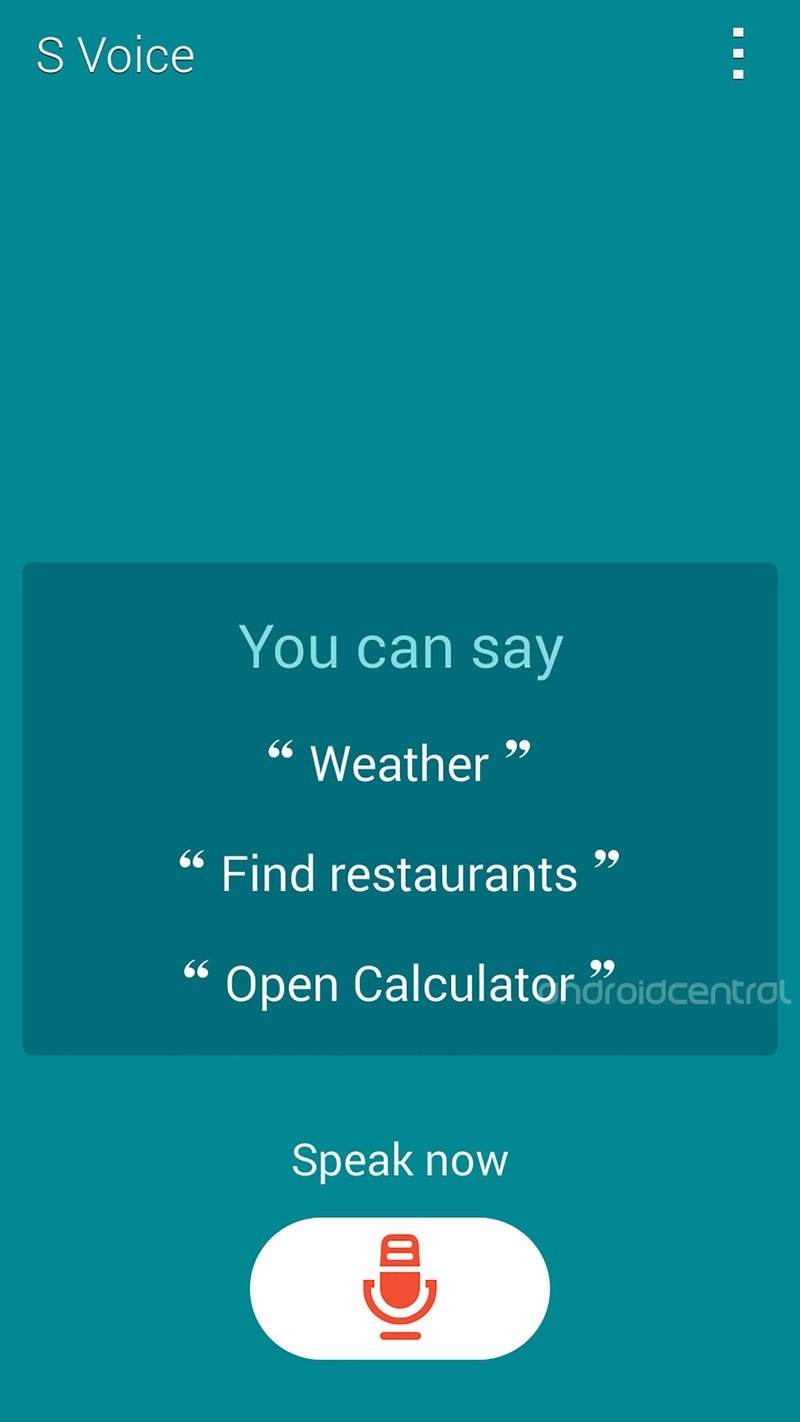
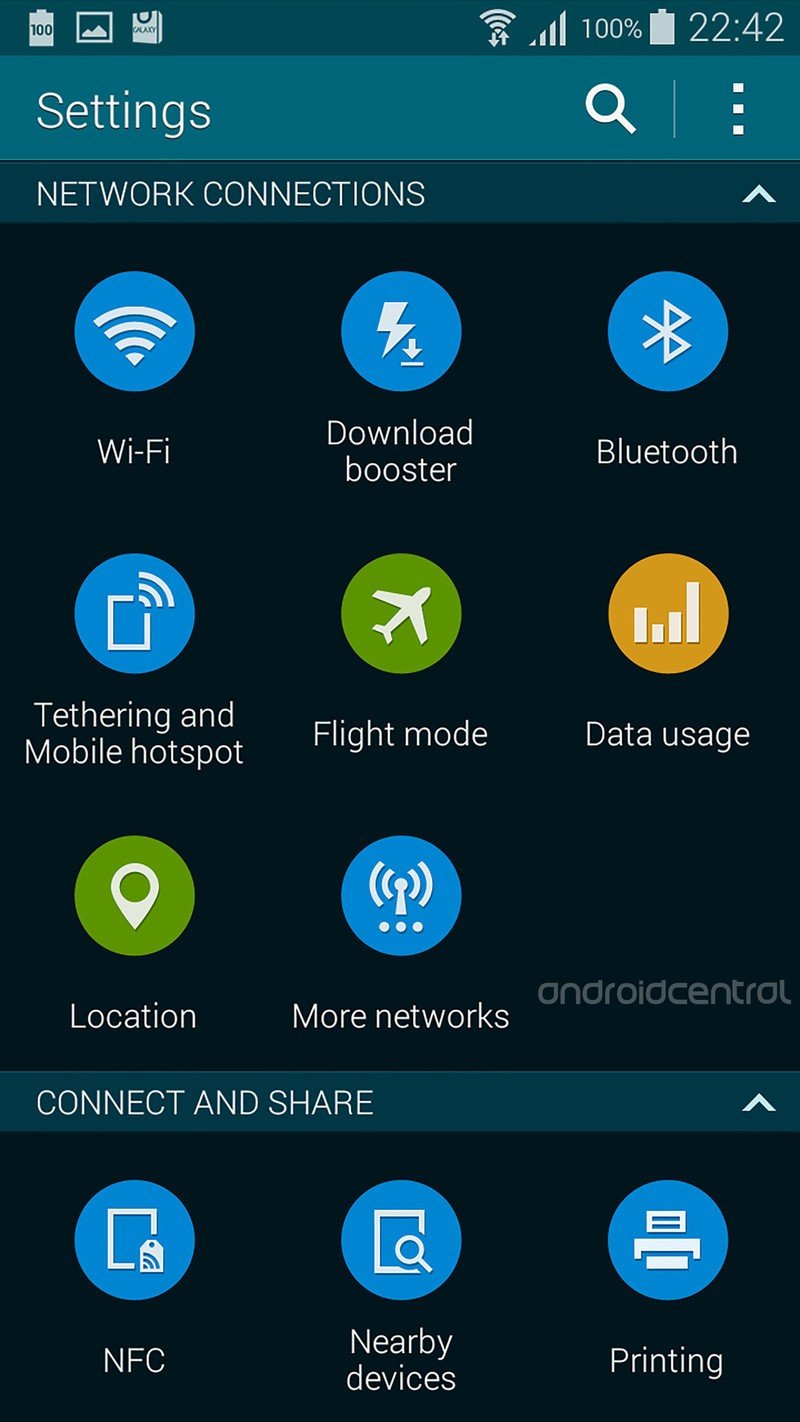
We have no complaints as far as performance goes, though. As previously mentioned, TouchWiz on the Galaxy Alpha is consistently smooth and responsive — easily as fast as the Galaxy S5 with the latest performance updates.
For the uninitiated, TouchWiz delivers a bewildering array of features — some useful, some comically useless — and the Alpha's labyrinthine Settings menu presents a clear picture of just how much stuff this phone has going on. A maze of multicolored balls is your window into everything from Download Booster, the feature that accelerates downloads in some apps by combining LTE and Wifi, to Air View, which lets you hover a finger over the screen to view previews of certain things. Mercifully, not everything is enabled out of the box, but that in itself presents a discoverability problems for some of the more obscure features. In any case, if you can imagine a smartphone doing it, chances are it's a feature on the Galaxy Alpha.
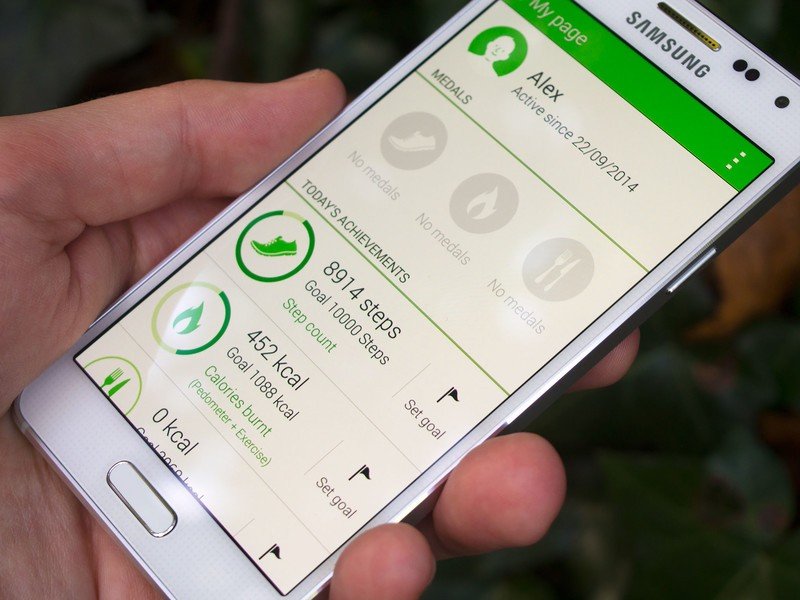
Standout features include Samsung's S Health app, which links into the built-in heart rate sensor on the rear of the phone, allowing you to track your calorie intake, pulse, steps taken and other kinds of exercise. S Health's feature set has expanded considerably over the past year, and it'll grow even more in the upcoming Galaxy Note 4. Questions remain over whether the heart rate sensor is actually worth. Regardless, in the Alpha seemed to track my heart rate more competently than either the Galaxy S5 or GS5 Mini — readings were more consistent, and the phone completed its scans more quickly with fewer failures.
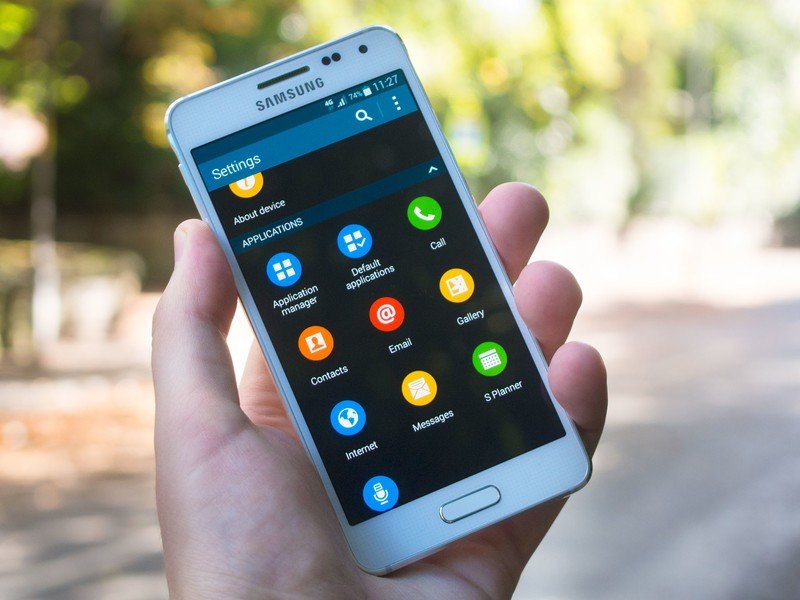
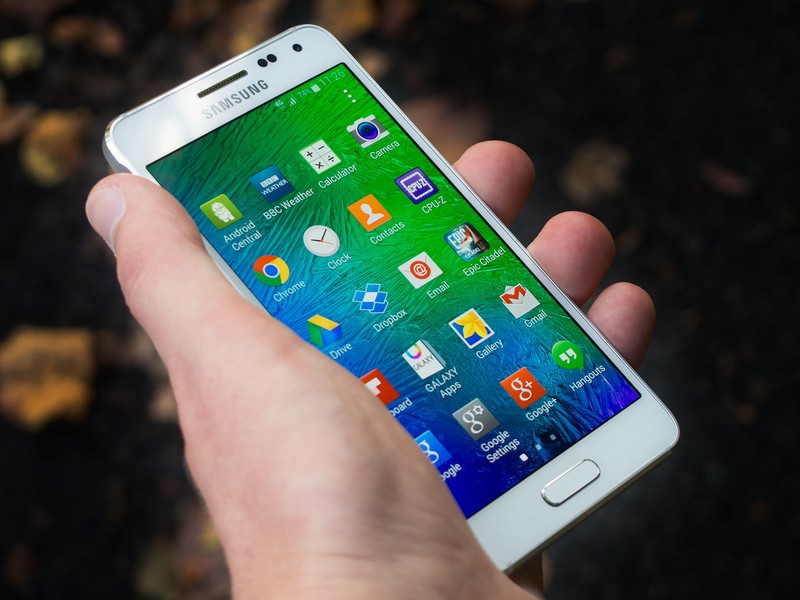
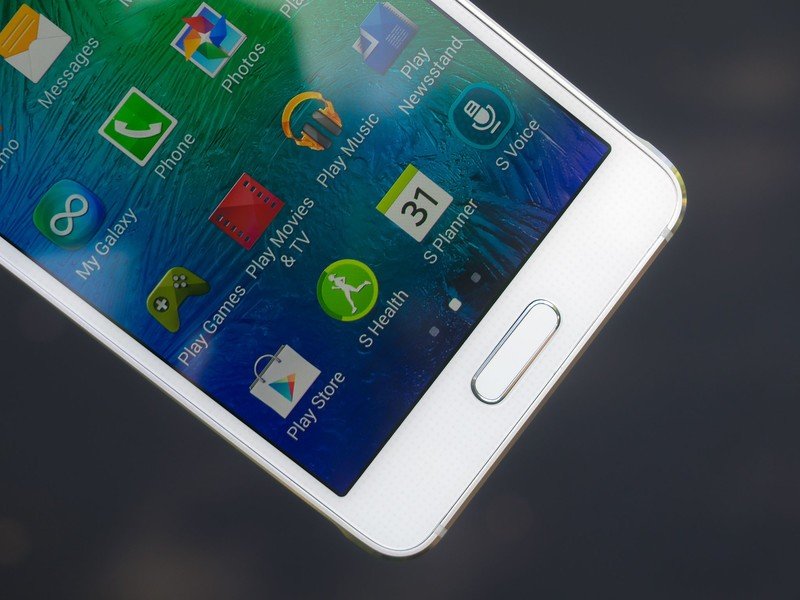
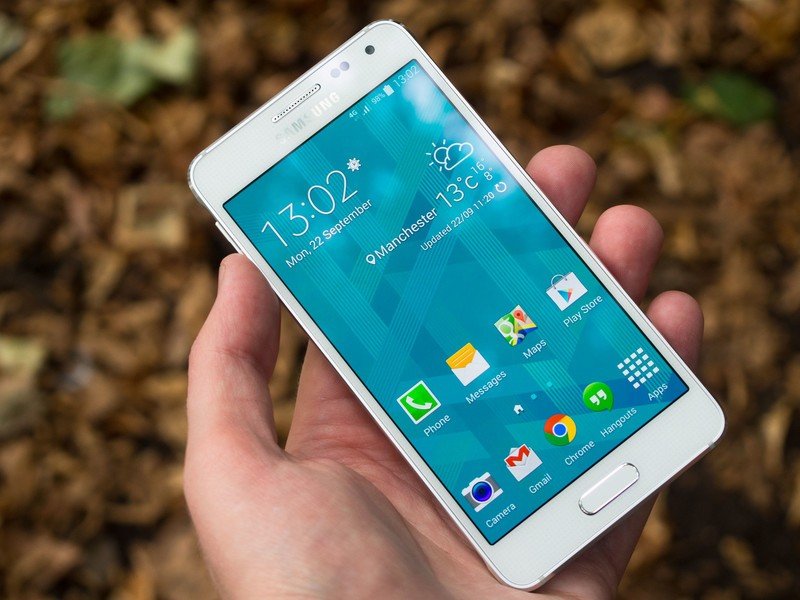
The Galaxy Alpha's home button houses another headline feature, the built-in fingerprint scanner. As before, this can be used to unlock your device, authenticate PayPal payments, Samsung services and certain websites, and the feature seemed easier to use on the Galaxy Alpha than previous Samsung devices, perhaps due to its smaller footprint. The Alpha's fingerprint scanner also seemed more reliable than the GS5's, though the size difference may have something to do with that as well.
Samsung's also broken its "Studio" features out into their own app. This collection of photo-editing and enhancement tricks was previously buried in an overflow menu in the Gallery app; now it's front and center in the app drawer, giving easy access to editing capabilities in "Shot & More," the shooting mode that lets take a burst of photos and apply different effects after the fact.
And that's just a small cross-section of everything Samsung's software can do. You'll find a more extensive rundown of all the new features in the current version of TouchWiz in our Samsung Galaxy S5 review.
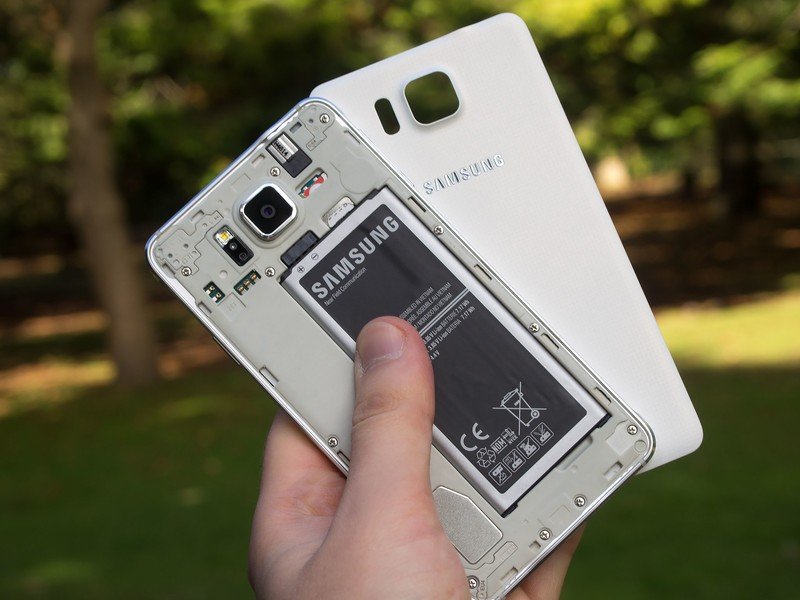
Battery life
The Alpha's Achilles' heel
Behind the Galaxy Alpha's back panel lurks a 1,860mAh removable battery. While it's true this is good bit on the small side for a 4.7-inch smartphone, we were prepared to give it the benefit of the doubt — after all, Samsung talks up the power-efficiency of its SuperAMOLED screens, and the Alpha's Exynos CPU is manufactured using a new, more efficient 20-nanometer process.
Unfortunately, though, it's hard to describe the phone's longevity as anything besides disappointing. You're looking at a single day's worth of use at most. And if it's a particularly busy day, you'll be reaching for a charging cable by late afternoon.
The Galaxy Alpha's relatively weak battery life is the biggest reason not to buy this phone.
In our first full day with the Galaxy Alpha we were able to squeeze just under 12 hours of moderate to heavy use from its battery, with just under three hours of screen-on time. That involved using the phone for web browsing, social and other apps, taking a couple dozen photos and playing around with Epic Citadel and Subway Surfers. (Games in particular seem to take a heavy toll on the Alpha's battery.)
On our second day, with less intensive use, we crossed the 14 hour mark with more than three and a half hours of screen-on time. Most other days our usage was somewhere between those two points, while hopping between Wifi and LTE throughout the day.
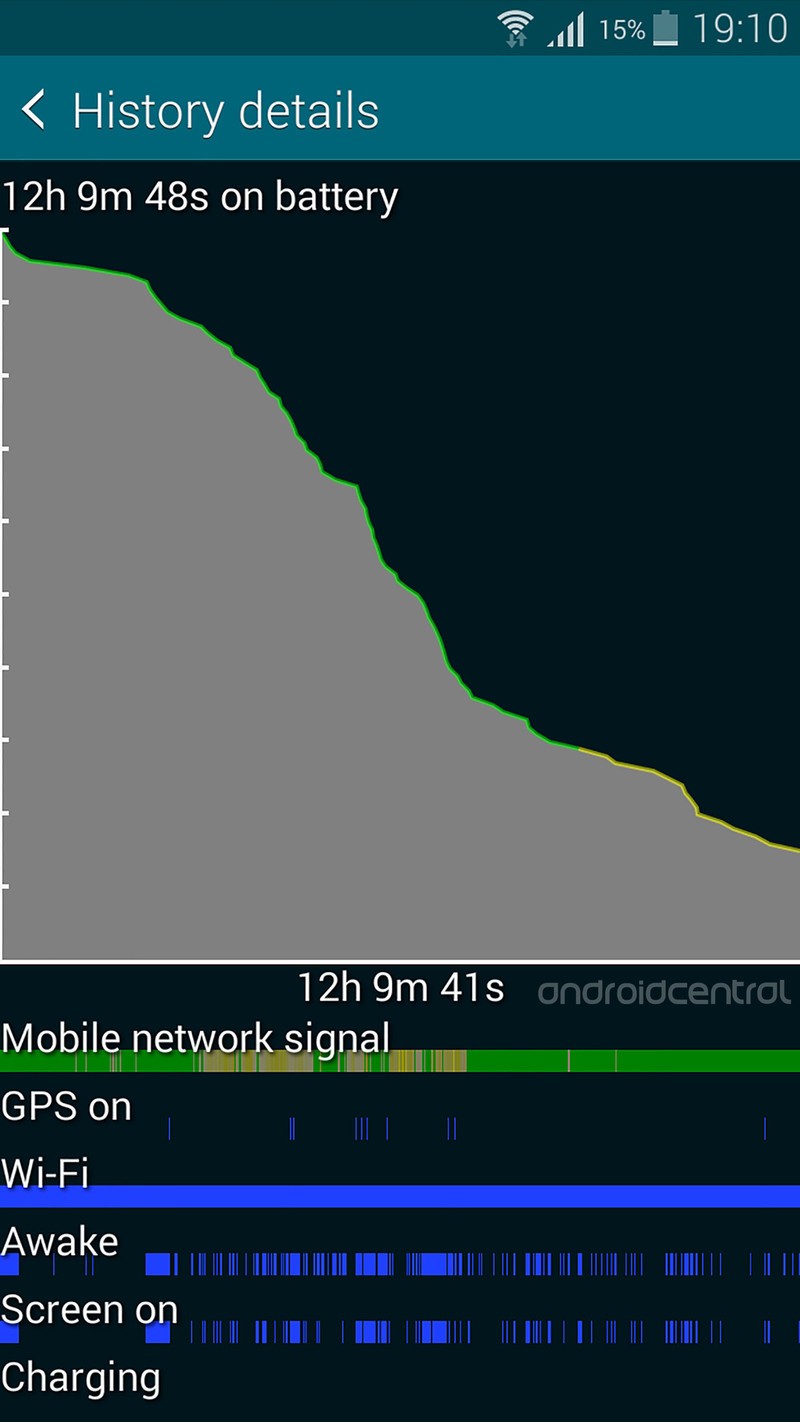
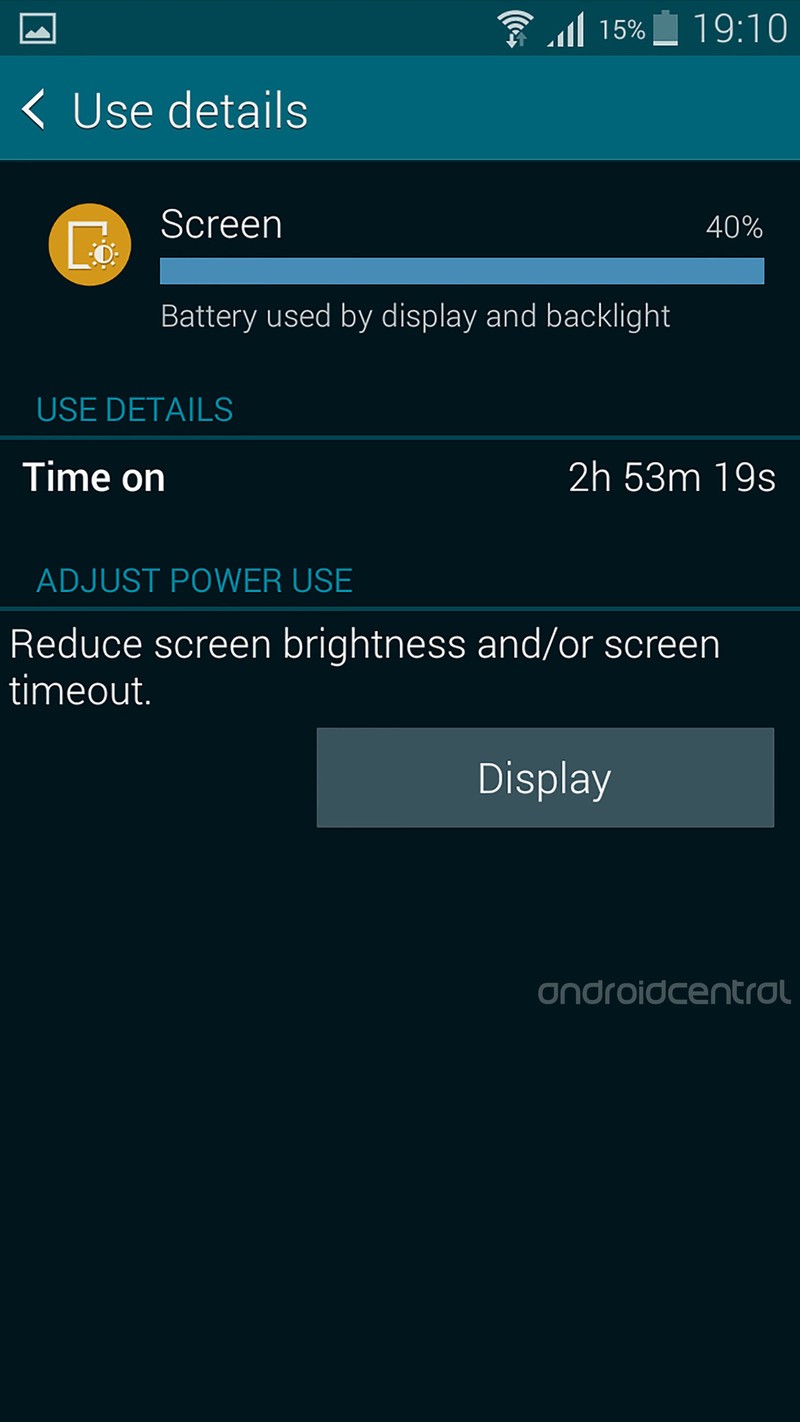
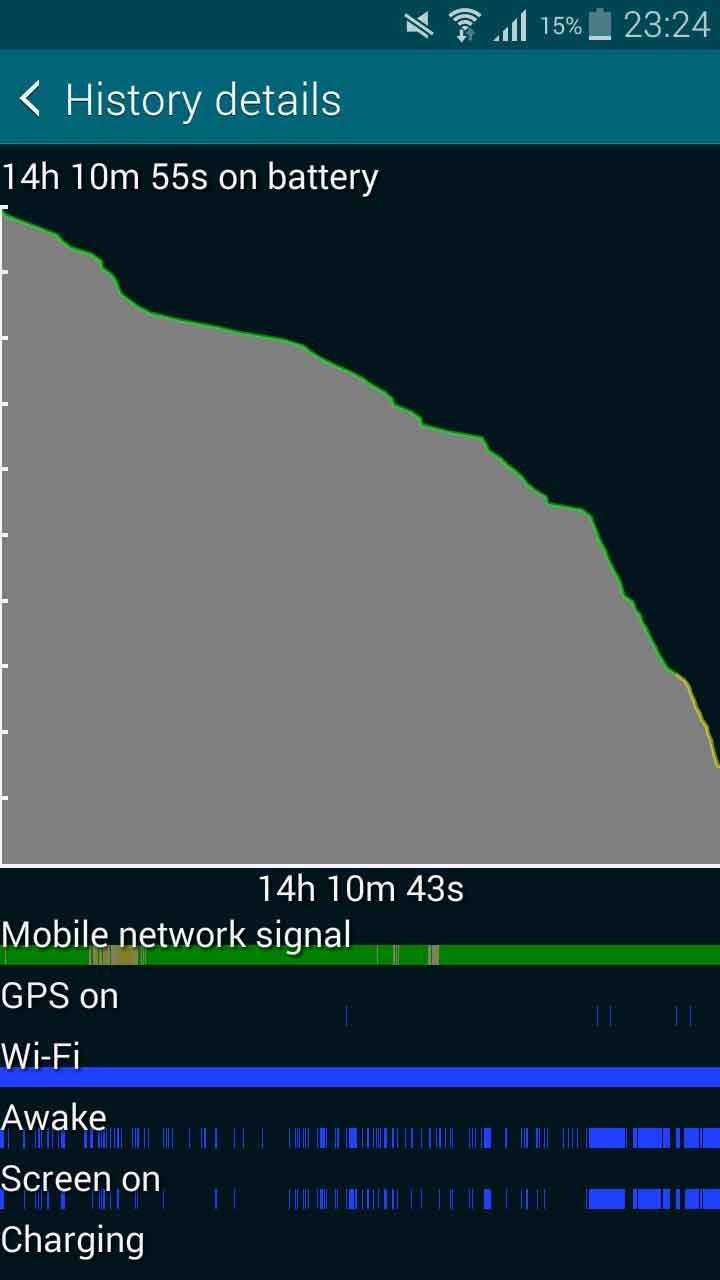
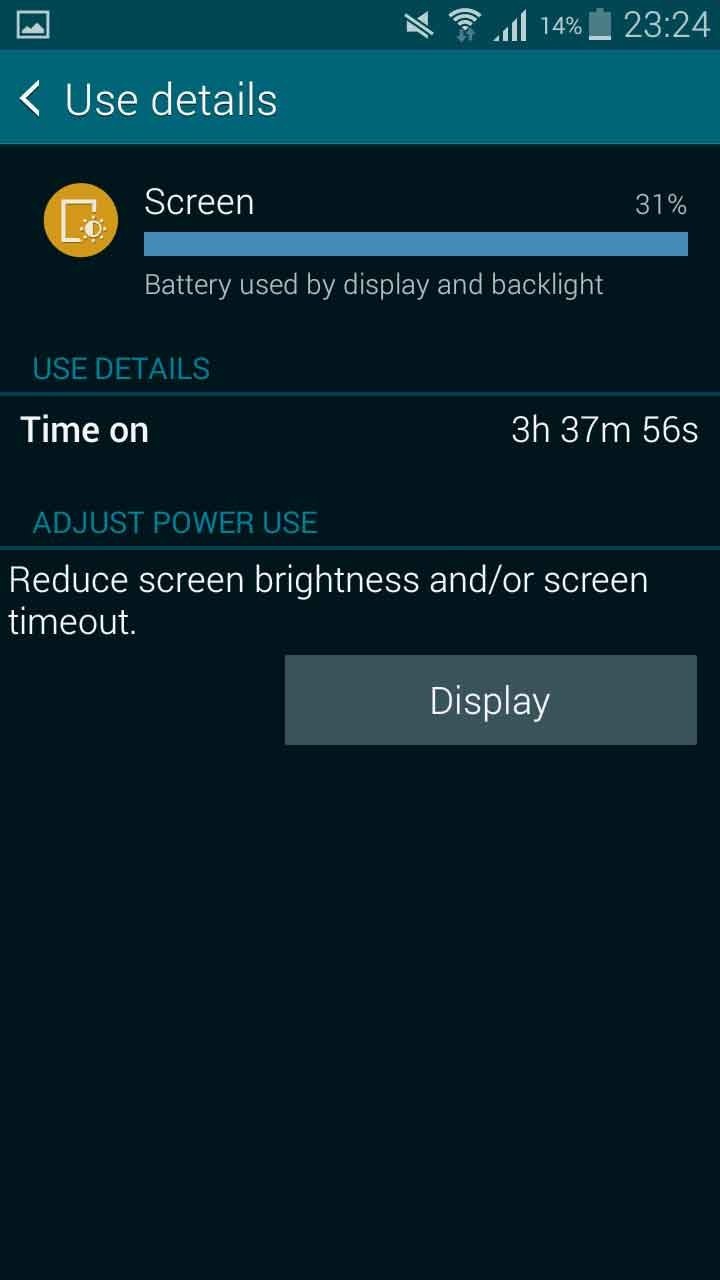
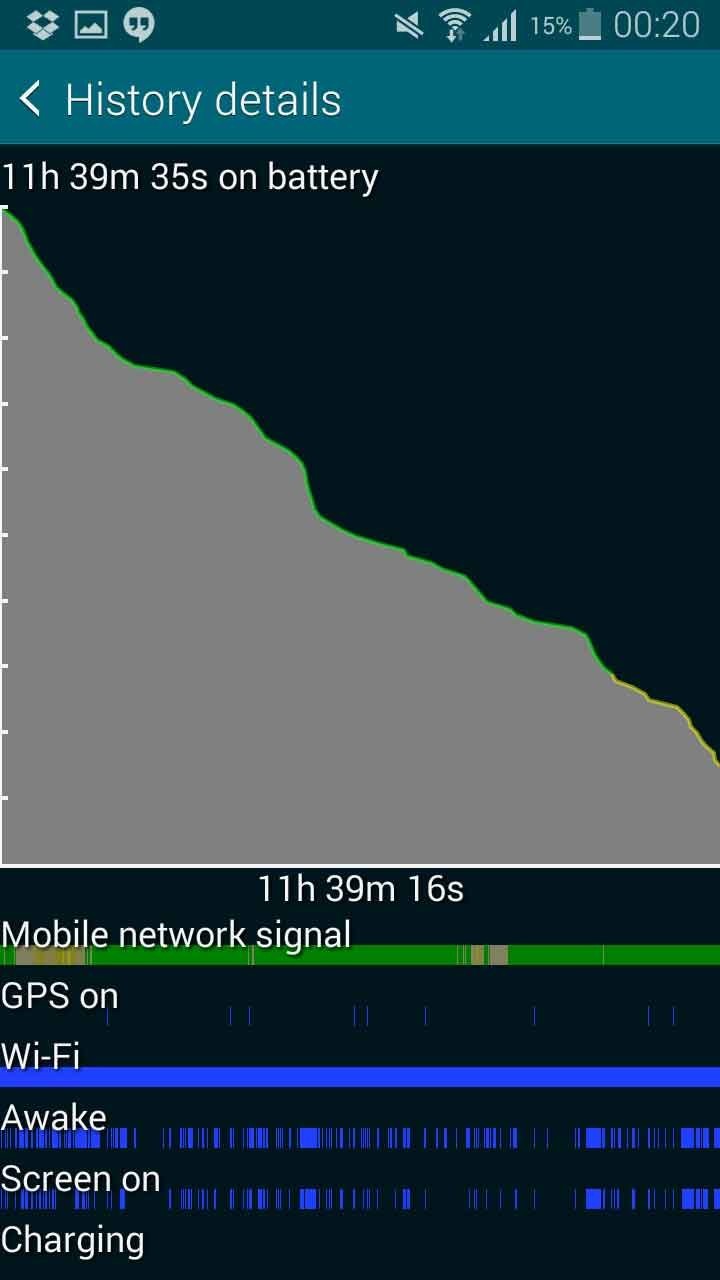
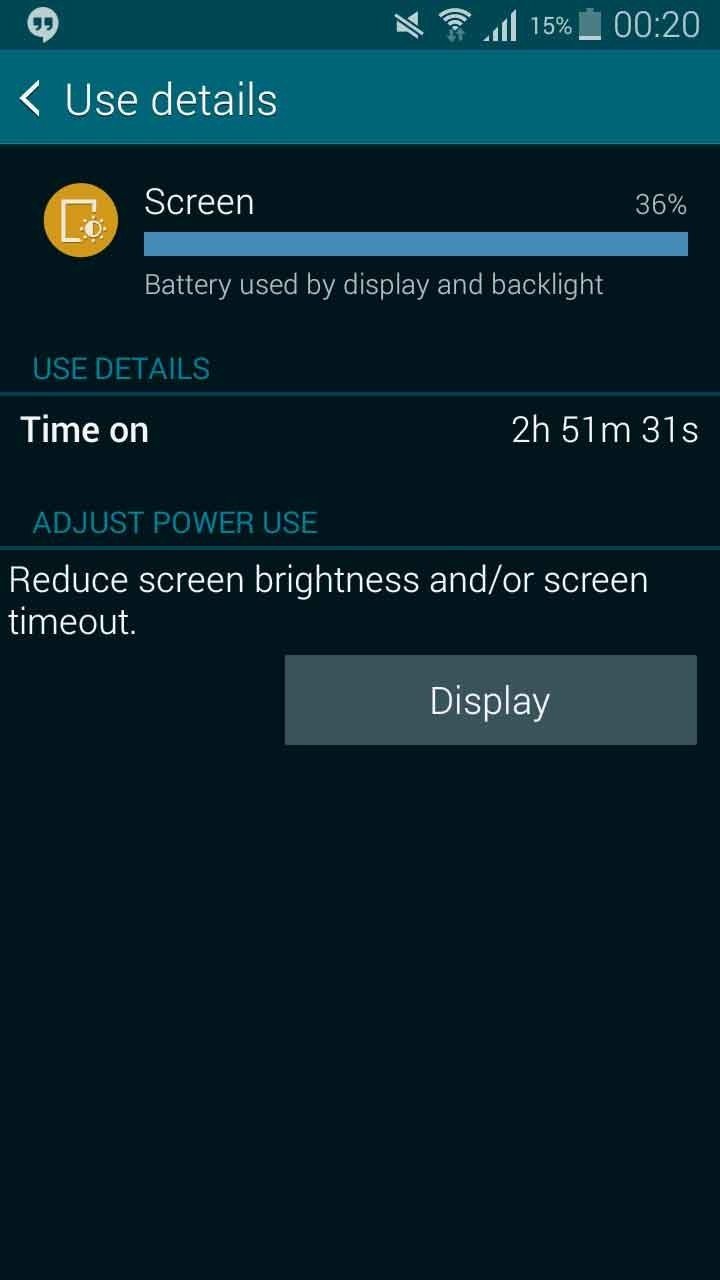
But there is one saving grace: the removable battery and back cover. At least you can swap out your dead battery for a fresh one, and an official wireless charging cover will be made available in the future, letting you top up easily throughout the day. Either or both of these accessories may be essential purchases for anyone planning on making long-term use of the Alpha.
Samsung offers a couple of power saving modes to squeeze some extra life from the Alpha's battery. The regular power saving mode lets you cut background data, clock down the CPU and set the screen to grayscale mode to save juice. Ultra power saving mode takes things a step further by cutting back most the phone's higher functions and limiting you to a handful of apps in grayscale mode.
Still, it's disappointing to see such anaemic battery life from what's supposed to be a premium handset. We can only assume that hitting that super-slim 6.7mm profile took priority over battery life.
Sony's Xperia Z3 Compact, a major competitor of the Galaxy Alpha in Europe, is being touted as having two-day battery life, and early tests have shown that's no exaggeration. Meanwhile Samsung's offering merely limps its way into the evening.

Galaxy Alpha camera review
Galaxy S5 déjà vu
The Galaxy Alpha's imaging capabilities broadly follow those of the Galaxy S5. In fact, in the run up to launch it was rumored that the Alpha's 12-megapixel shooter would use the same ISOCELL technology as the GS5's 16-megapixel sensor. (Designed to produce sharper shots by reducing interference from backside-illuminated pixels.) Samsung hasn't officially confirmed this anywhere, but judging by the images we've captured and the feature set offered, it certainly appears to be the case. Basically, it's good and bad in the same ways as the Galaxy S5.
In daylight you'll capture great-looking 12-megapixel shots (in 16:9 orientation), and Samsung's capable Auto shooting mode adapts well to most scenarios. There's really not much more to say about daylight performance than that — photos are as good as you'll get from any Android phone with the exception of GS5, which wrangles an extra four megapixels.
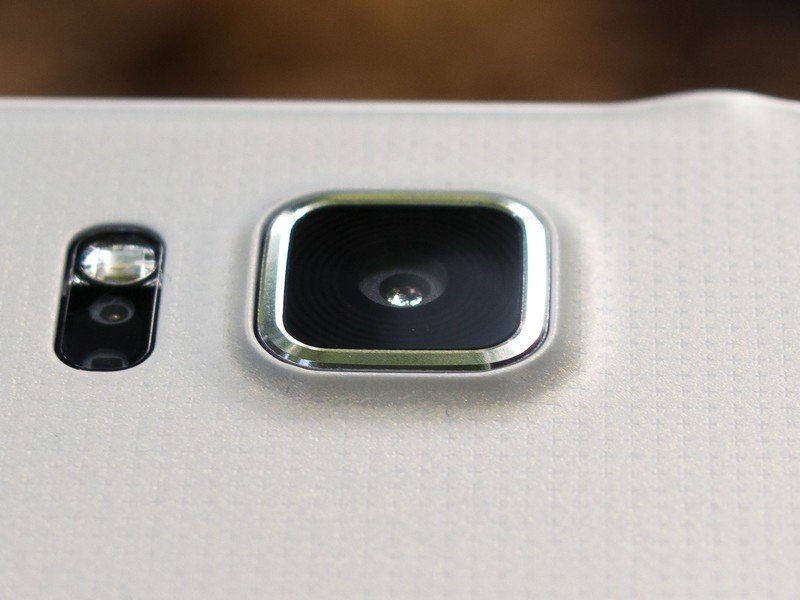
Like the GS5, the Galaxy Alpha is great in daylight and hopeless in the dark.
The massive grid of additional options lets you tweak metering, stabilization, EV (exposure value) and other settings if you want. The Galaxy S5's excellent HDR mode has made it across too, along with with live HDR previews through the viewfinder. HDR shots from the Alpha look great zoomed out, but at full magnification some shots exhibit weird artefacting around the edges of objects, particularly buildings and trees. It's not a huge deal given the size of the images captured, but it's not something we noticed on the GS5.
Samsung's Selective Focus mode lets you capture a burst of exposures at different focus levels and then choose the focal point after the fact. We've seen a few smartphones attempt this kind of feature over the past year, most significantly HTC's One M8 which dedicates actual hardware to this feature in the form of a depth-sensing camera. It's always highly situational, though, and Samsung's implementation isn't much easier than just tapping what you want before shooting and letting the autofocus work its magic.
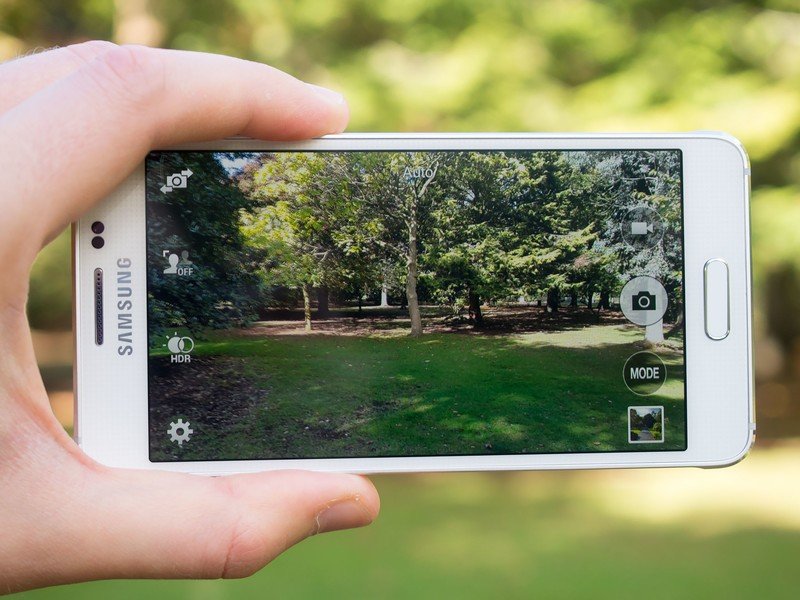
Other staple features like Shot & More — the home for all Samsung's smart burst shot features — Panorama, and the somewhat weird Virtual Tour mode, live on their own under the Modes button.
The Galaxy Alpha is a capable video camera too, capturing footage at up to 4K resolution with an ample bitrate of around 48-49Mbps. If you want to take advantage of any video features like digital stabilization, though, you'll need to scale down to 1080p.
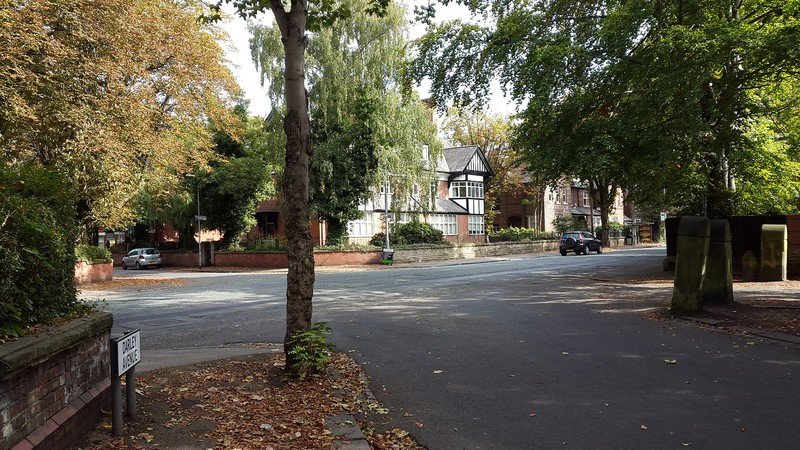
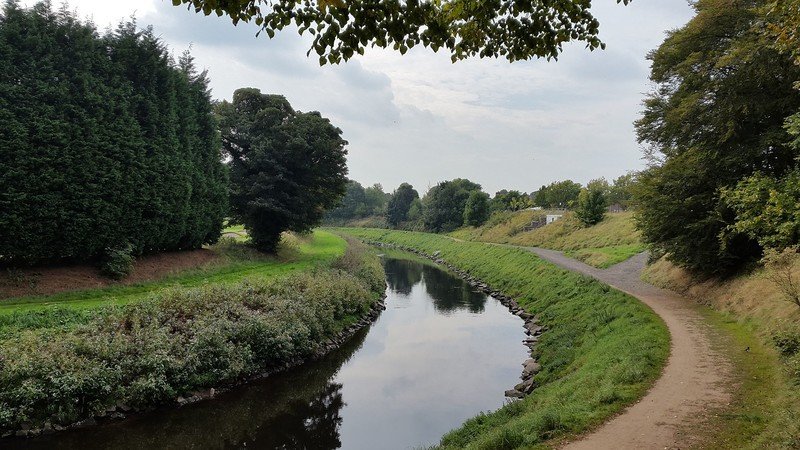



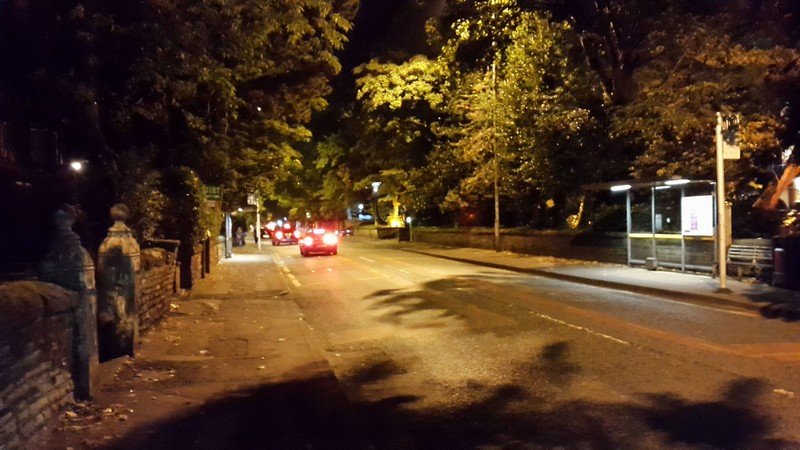
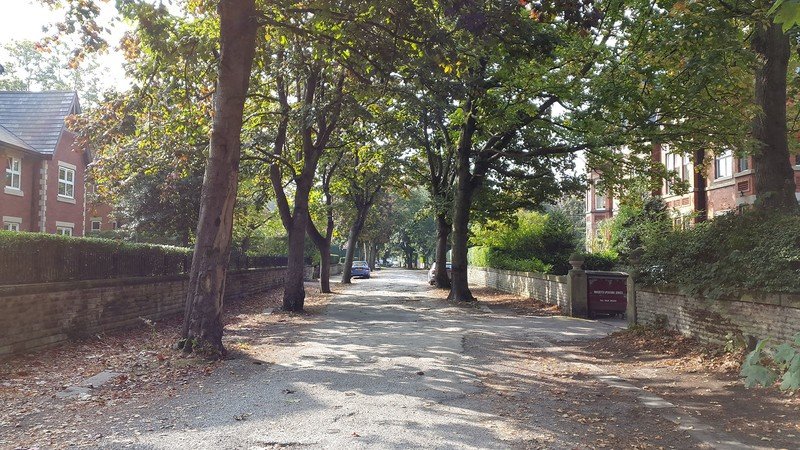
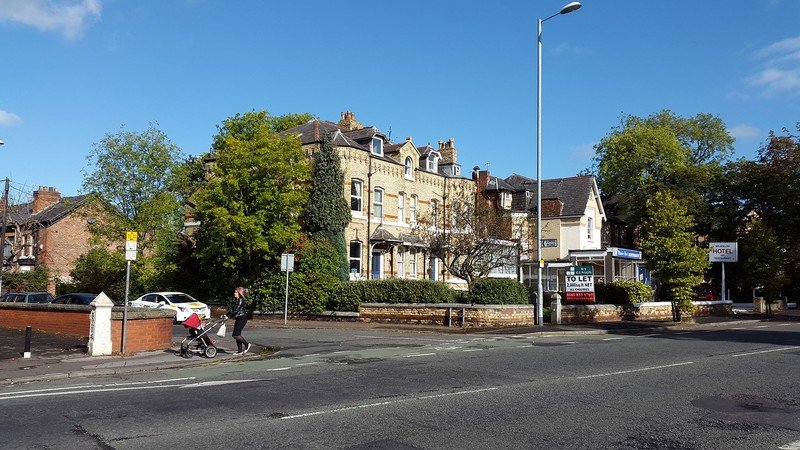
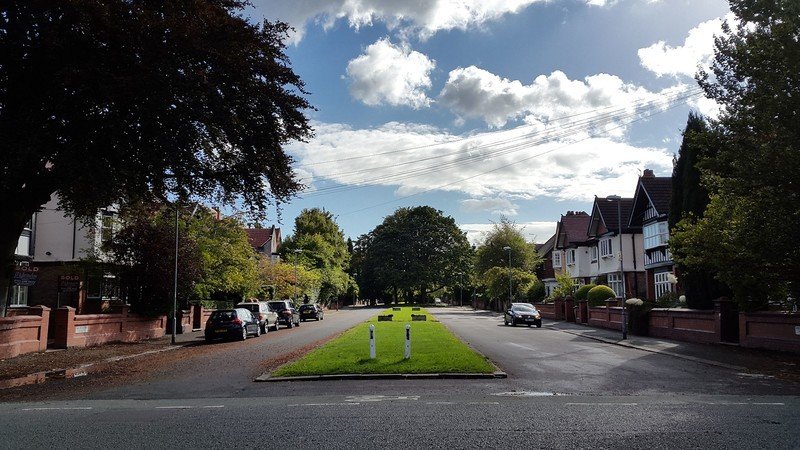

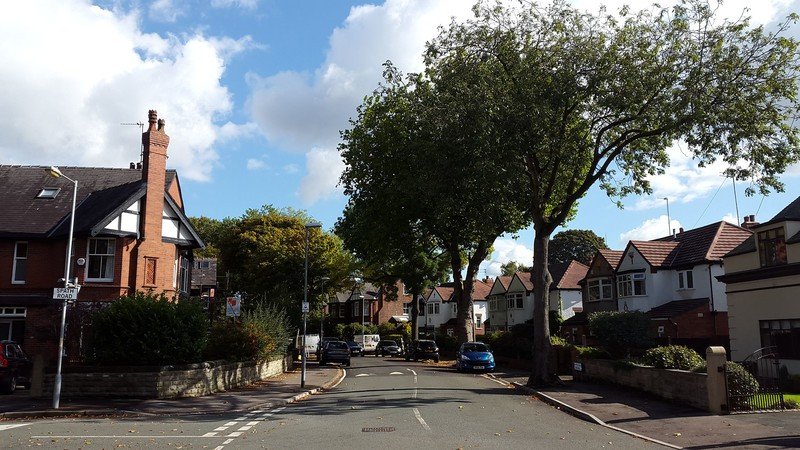
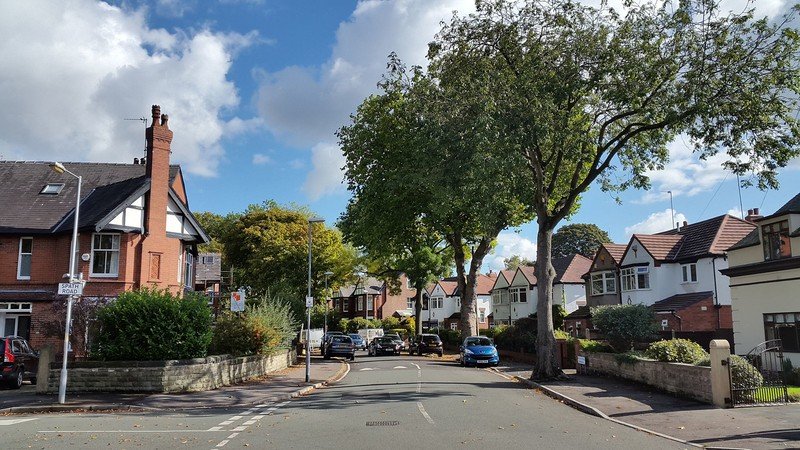
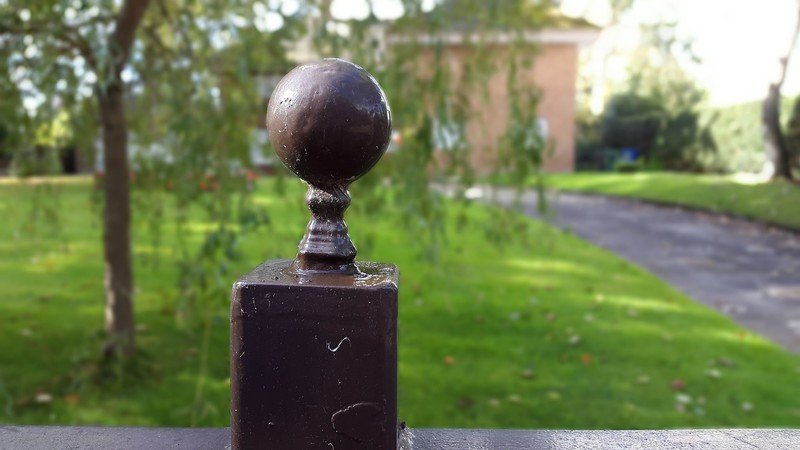
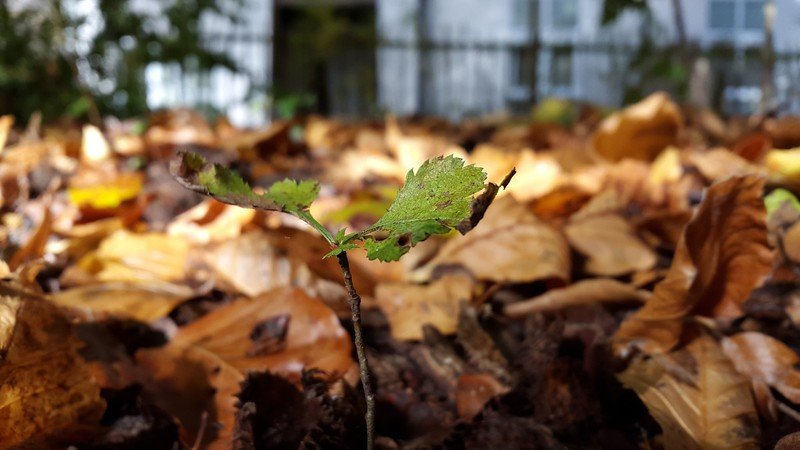
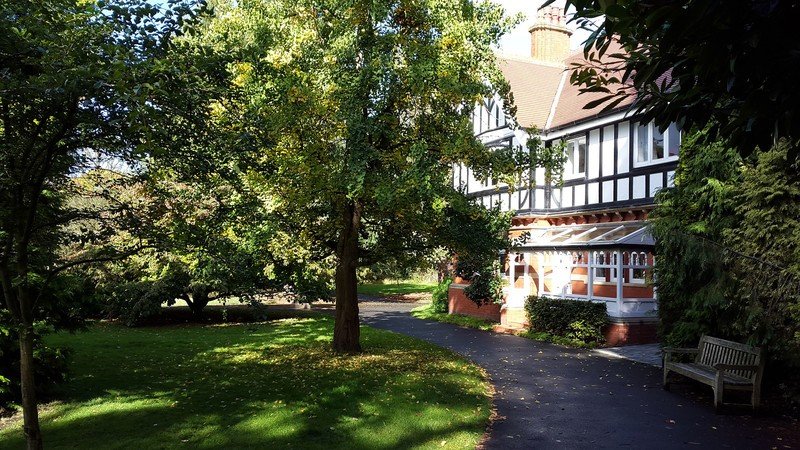
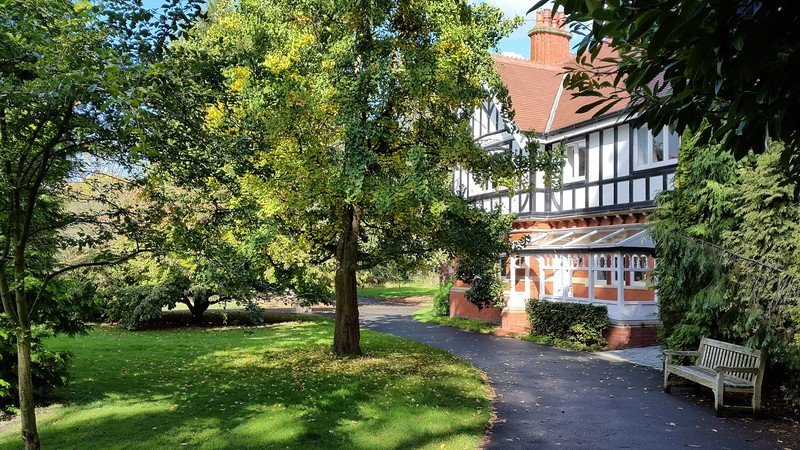

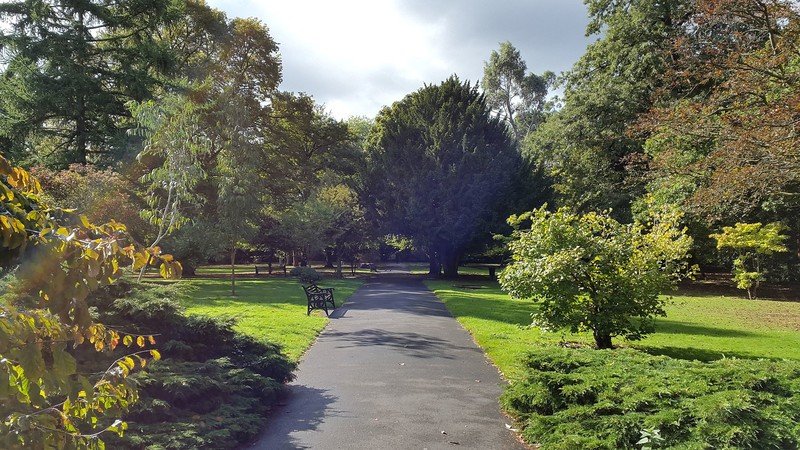
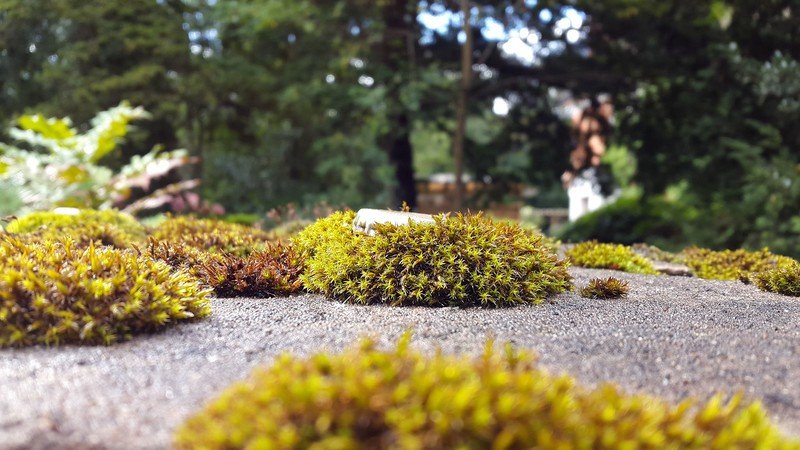
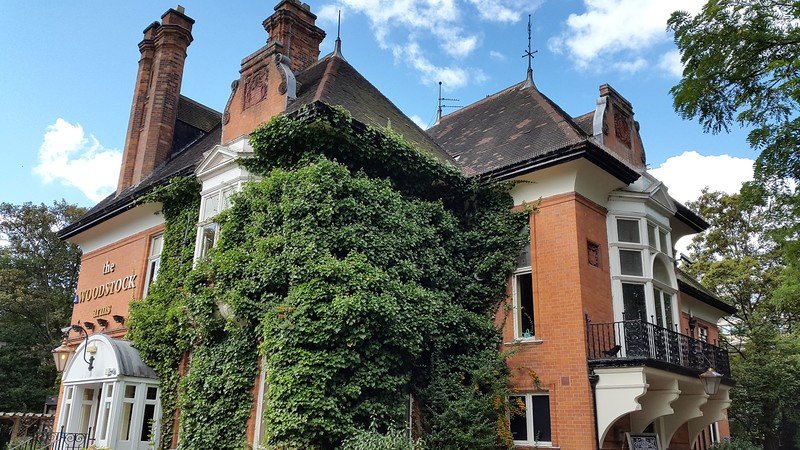
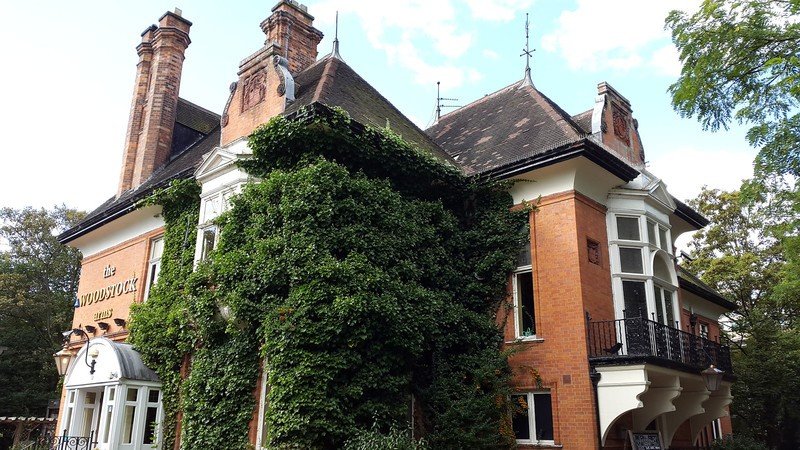
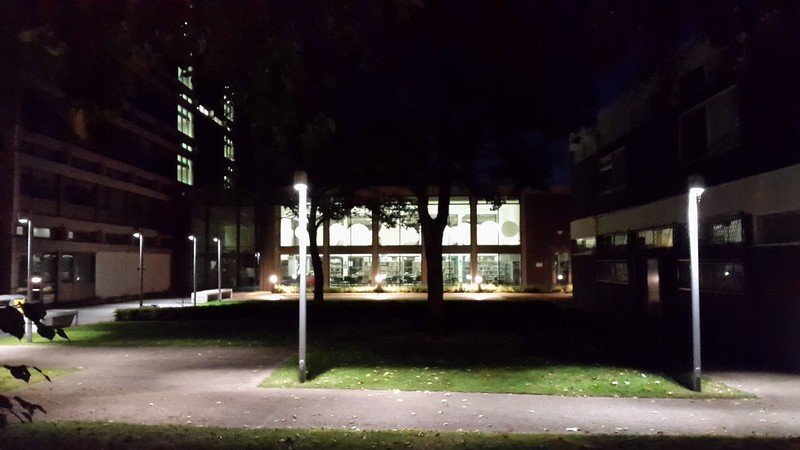

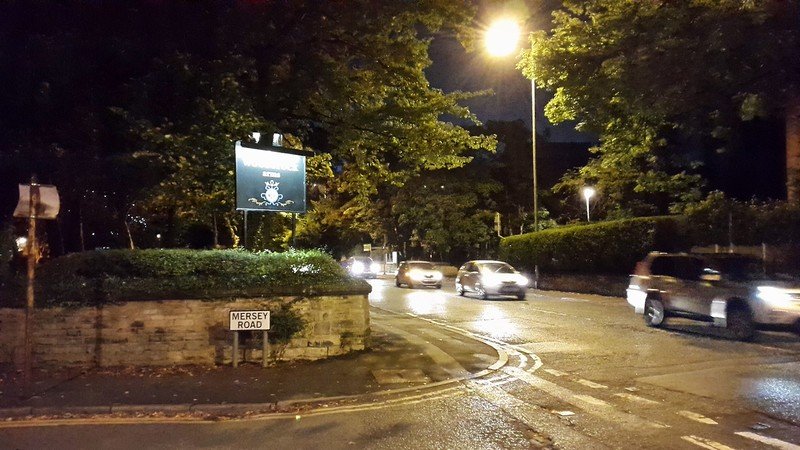

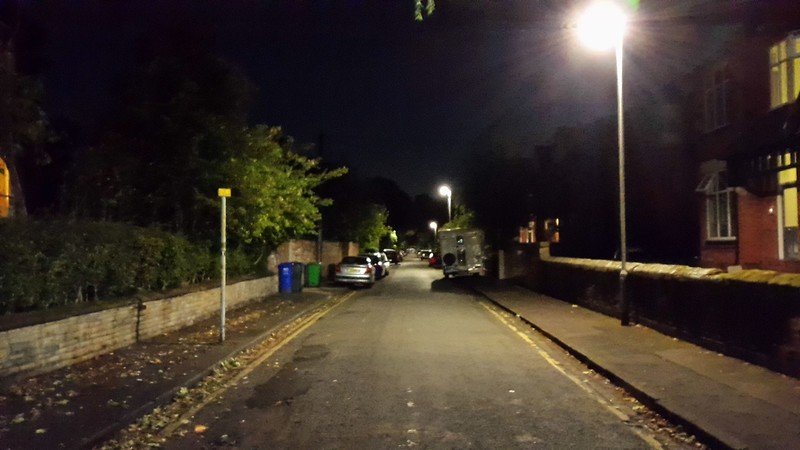
Like the Galaxy S5, low light performance is where everything starts to fall apart. Images captured indoors or at night are frequently blotchy, blurry, or out of focus altogether. That's despite the software stabilization feature that aims to improve low-light images by waiting for a stable shot before capturing. You can get away with a certain amount or mushiness in images given their relatively high resolution, nevertheless the Alpha is no match for OIS-equipped cameras like the LG G3 for night-time photography.
For better low-light performance, we're pinning our hopes on the Alpha's big brother, the optically-stabilized Galaxy Note 4.

Samsung Galaxy Alpha: The Bottom Line
Almost awesome
I like the Galaxy Alpha a lot. And that makes its flaws — both fatal and niggling — all the more frustrating.
But let's start with the positive. It's great to see Samsung embracing flagship-level specs in a smaller, more pocketable device. (Though sure, it's not the first phone maker to do so.) The Alpha is a speedy performer, and TouchWiz's expansive feature set means there's very little this phone can't do. The rear camera is a solid performer in daylight, and the display, though a 720p PenTile panel, is bright, vivid and clear. What's more, it just feels superior to every Samsung phone I've used previously, with the exception of its big brother the Note 4. The light chassis, metal band and lack of general creakiness gives the impression of a solid, well-built piece of technology. The metal band is a small change but its presence makes a big difference.
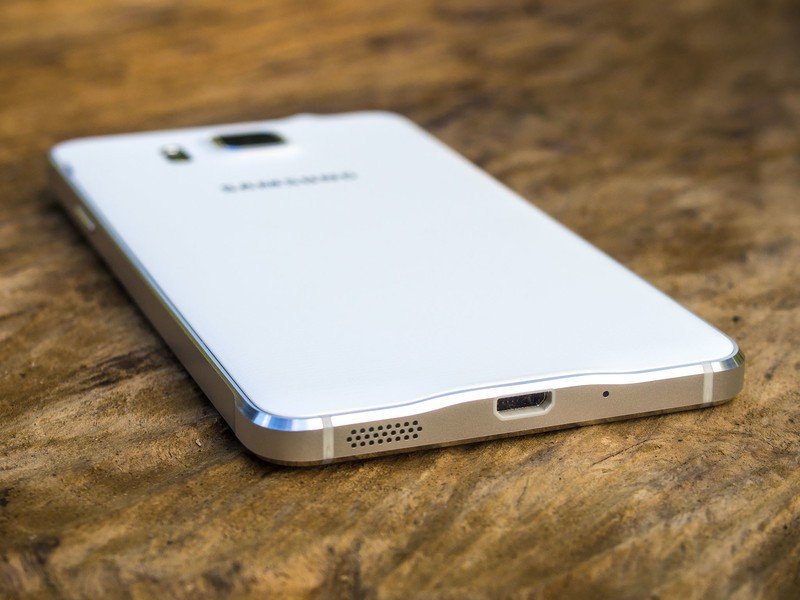
This is a promising little phone, and I can't wait to use the Galaxy Alpha 2.
The elephant in the room is Samsung's main rival, Apple. With the Cupertino company fielding two high-end iPhones at different screen sizes this year, the Galaxy Alpha and Note 4 emerge as direct rivals to the iPhone 6 and 6 Plus. And Samsung isn't the only big OEM adopting this strategy — Sony's taking the same approach with its Xperia Z3 and Z3 Compact.
Whether the Galaxy Alpha is a better phone than the iPhone 6 is a question for another time, but the Alpha's launch pricing bears mentioning here. UK prices start at around £500-520, close to that of many flagship phones including Apple's entry-level iPhone 6, and compared to the competition you'll have to compromise in a couple of areas. Like the Galaxy S5, the Alpha's camera performs dismally in low light. It's outshone by most high-end Android phones in the area of battery life too — if you pick one up, the official extra battery kit would be a wise investment.
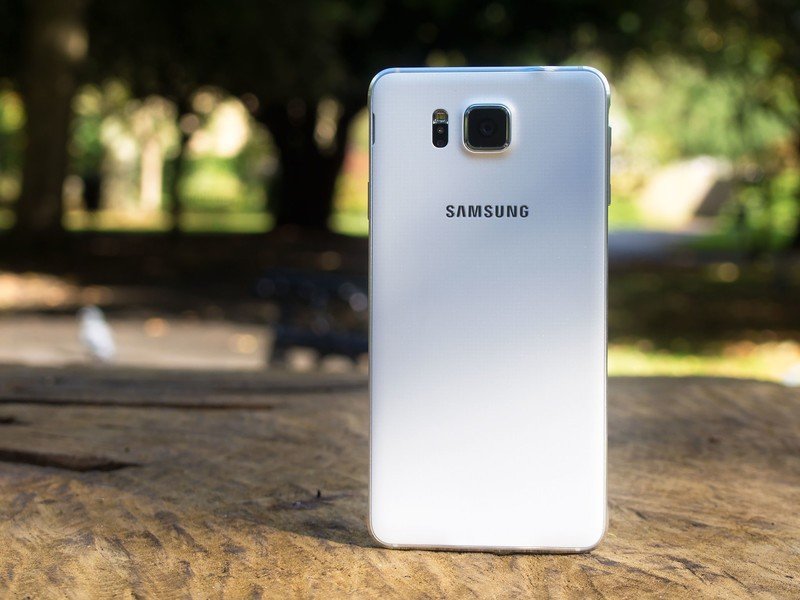
We've come a long way from cheap-feeling plastic Samsung phones like the Galaxy S4 in a relatively short space of time. This is a promising little phone, and I can't wait to use the Galaxy Alpha 2, which will hopefully have ironed out the problems in this first-generation release. Right now, the Alpha is very nearly an awesome smartphone, but ultimately it falls frustratingly short of achieving its true potential.

Alex was with Android Central for over a decade, producing written and video content for the site, and served as global Executive Editor from 2016 to 2022.
